
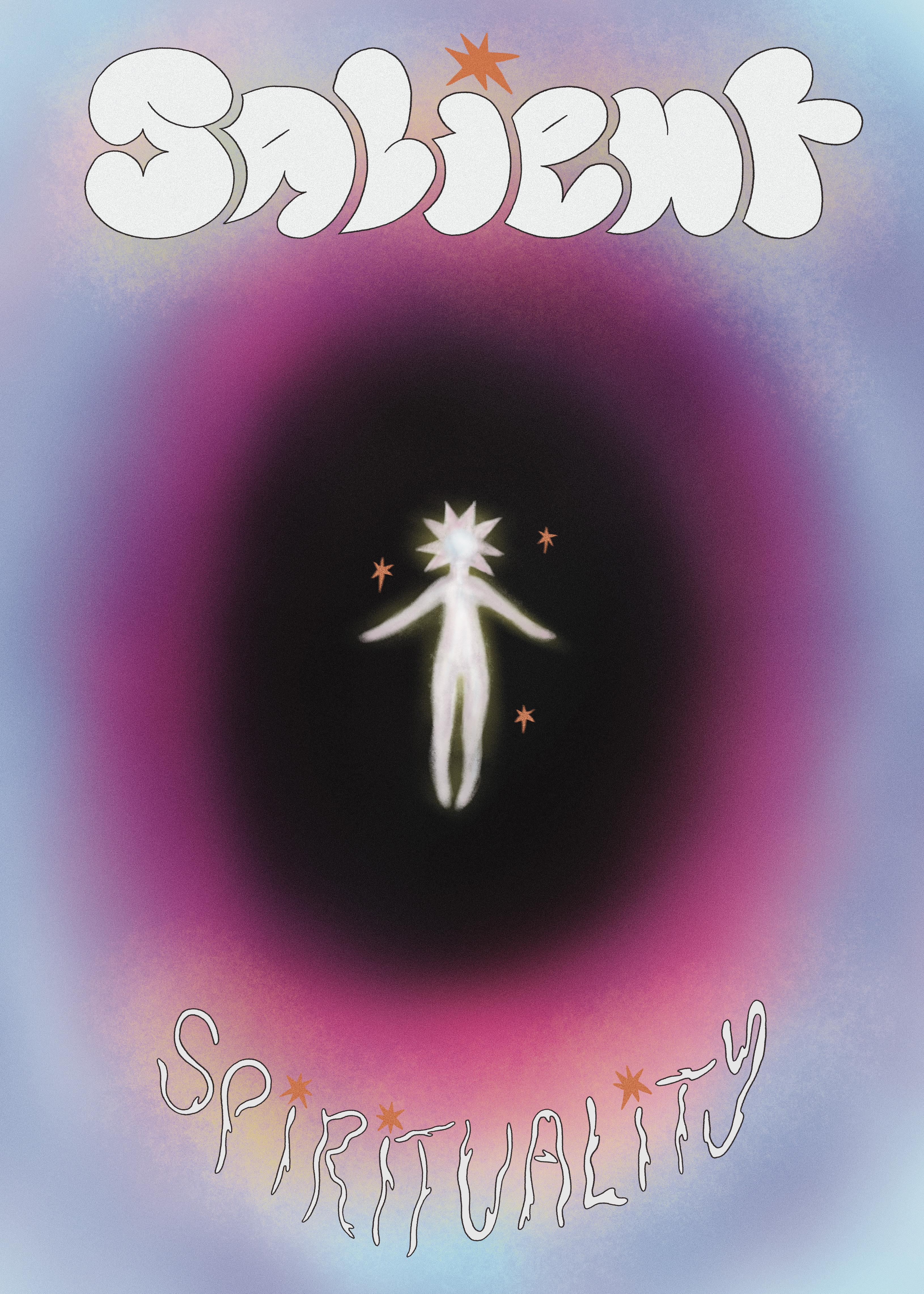
Volume 86 Issue 18 Monday 14th ✦ August 2023
3
Editorial ✦ Etita
Letters ✦ Pū
The News ✦ Kawe Pūrongo
06. It’s Squid Game at VUW after 74 Staff Members Granted Voluntary Redundancy
07. Hot Takes in the Hub
08. Candidate Kōrero: Ibrahim Omer
10. Candidate Kōrero: Scott Sheeran
4
Arts & Culture ✦ Ahurea
12. PSA 2023 is a Shockingly Hilarious Take on NZ Politics — Maia Ingoe
Features ✦ Ahuatanga 5
13. Consumer Witches and Fake Crystals —Niamh Vaughan
16. Selling Spirituality—Jia Sharma
18. Mother Mary and The Side Wound: A Trans Reading of Catholic Idolatry—Willem Koller
22. I Almost Joined a Cult, and So Could You—Kiran Patel
25. The Cycle Continues: The Contemporary Witches Of Wellington—Phoebe Robertson
6
30. Aunty Vic
31. Fruit Salad
32. Ngāi Tauira
33. Pasifika Students' Council Columns ✦ Tīwae
7
8 Horoscopes ✦
Creative Space ✦ Auhua
9
Puzzles ✦ Panga
About Us
Salient is published by, but remains editorially independent from, the Victoria University of Wellington Students’ Association (VUWSA).
Salient is funded in part by VUWSA through the Student Services Levy. Salient is a member of the Aotearoa Student Press Association (ASPA).
The views expressed in Salient do not necessarily reflect those of the Editors, VUWSA, or the University.
Complaints
Complaints regarding the material published in Salient should first be brought to the Editors in writing (editor@salient.org.nz). If not satisfied with the response, complaints should be directed to the Media Council (info@mediacouncil.org.nz).
Letters
Got opinions about what we publish? Send it to letters@salient.org.nz and we'll publish it.
Twitter: @salientmagazine Facebook: fb.com/salientmagazine
Instagram: @salientgram www.salient.org.nz Find Us

Salient Podcasts
Instagram: @salient_podcasts
Contents
1 2
00 ✦ C0NTENTS ✦ RĀRANGI KŌRERO
Catch us on:
Unedited
Editorial
Get in, Loser, We’re Getting Spiritual
Welcome to our ‘Spirituality’ issue, another new one (although we did find one from 2012, and maybe 2020’s Alient counts) from your favourite editor duo.
Regardless of whether you’re deeply devoted to a deity or god(s), an atheist who ‘hates that astrology bullshit’, an enlightened, wellness, green-juice girlie, the witchy tarot friend with the clunky crystal rings, that bro hoping to be abducted by aliens, or that guy who doesn’t believe in God (but, like, this one time he got too high, man, and saw Jesus in the club)— everyone has their own form of spirituality.
Spirituality, moving away from its religious or ‘woo woo’ associations, is the essence of being connected to something bigger than yourself—whether that be gods, each and every human soul, aliens, ghosts and spirits, or just that voice in your head that tells you to get out of bed for your 9 a.m. lecture. It’s about where your faith lies. You know, that thing that lets you know everything's gonna be okay, and no one actually hates you.
University is a splendid time for connecting, or reconnecting, to spirituality. Think about it: you’re in your late teens and early twenties, alone for the first time, left to explore a world full of collected knowledge and inspiration. You’re bound to discover some sense of purpose or drive. You might see it in your new favourite band, hear it in a D&B hit at 121 Festival, taste in your campus Subway sandwich. You might even see symbols in the shoes that skate past you on the street. Now you’re thinking big. You’re inspired to make something, experiment with your dayto-day routine, share interests in a conversation, or just keep going with your life toward the next best dopamine spark.
It’s as simple as that. Spirituality is your sense of spirit. It’s what makes you more than just a body. It’s your mind and how that mind fits into and adds to this universe full of conscious minds ever evolving and reincarnating.
I challenge you to take a deep breath, and look around you at what it is that makes you unique? Who are you? What kind of friend, student, partner, co-worker are you? What are your interests and values? Who are the people you surround yourself with? What are the things you associate with and dress yourself in?
We love to romanticise things like knowing yourself, and there’s value in that too. But unless you’ve been living under a rock, the word ‘spirituality’ probably makes a few things come to mind: crystal girls and astrology, witchcraft and manifestation, all the way through to incense and yoga.
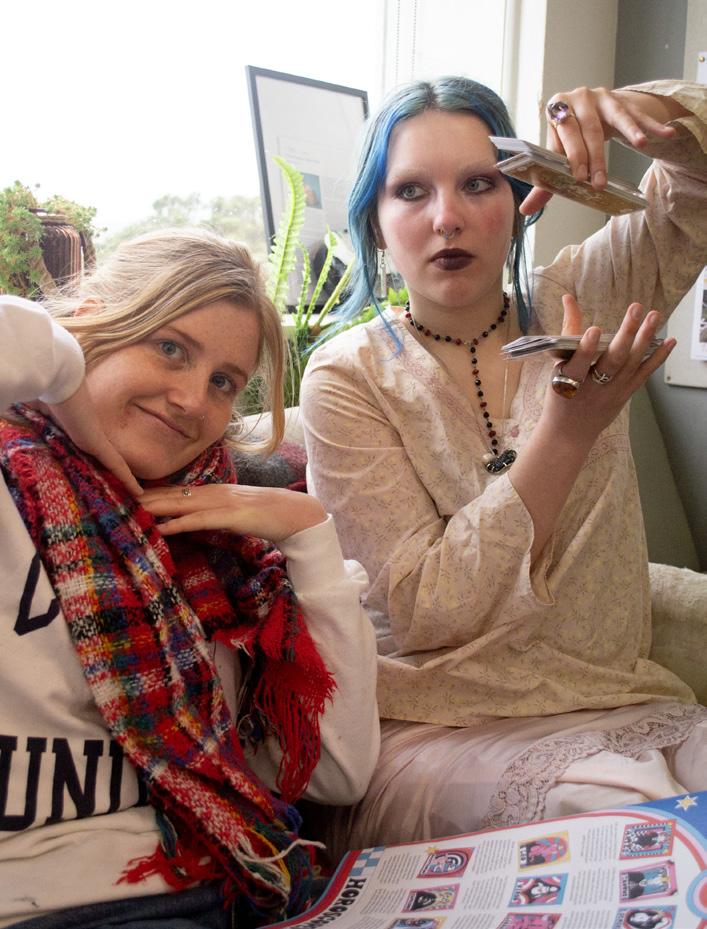
There’s no denying these things have a choke-hold on the TikTok algorithm. While we’re open to learning more (and we know you’re dying to know about realworld religious cults), this issue is also here to be critical. What are the roots of these practices, and can I really trust the tarot readings on my FYP?
For the ‘Spirituality’ issue, Niamh explores how consumerism has changed the ethics and authenticity of using crystals for spiritual practice. Jia follows this up by exploring how ‘spirituality’ has been exploited from its cultural roots and twisted into an accessory. Willem explores Catholicism through the lens of transness. Kiran almost joins a cult in the interest of ✨journalism✨ and has some lessons to share. Phoebe asks what witchcraft means to those who identify with the practice in Wellington today.
In our news section, we have not one, but two Wellington Central Candidate Kōrero profiles for you! Ethan has been chatting up National candidate Scott Sheeran to bring you his reckons on greenfields housing development, the bus schmozzle, investment, and his old-school band days. Meanwhile, Zoë has been wrangling Labour candidate Ibrahim Omer to tell Salient about his priorities in transport, the cozzy livs crisis, advocating for workers, and his connections to VUW. We’ve also got news of voluntary redundancy at VUW from Niamh (kia kaha to our academic community).
Arohanui, Fran and Maia xx



3 Spirituality ✦
01 ✦ EDITORIAL ✦ ETITA
The
Session Salient Podcasts
Salient is fuelled by:



4 ✦ Spirituality 02 ✦ LETTERS ✦ PŪ ✦
By Daniel Vernon for VUWSA✦
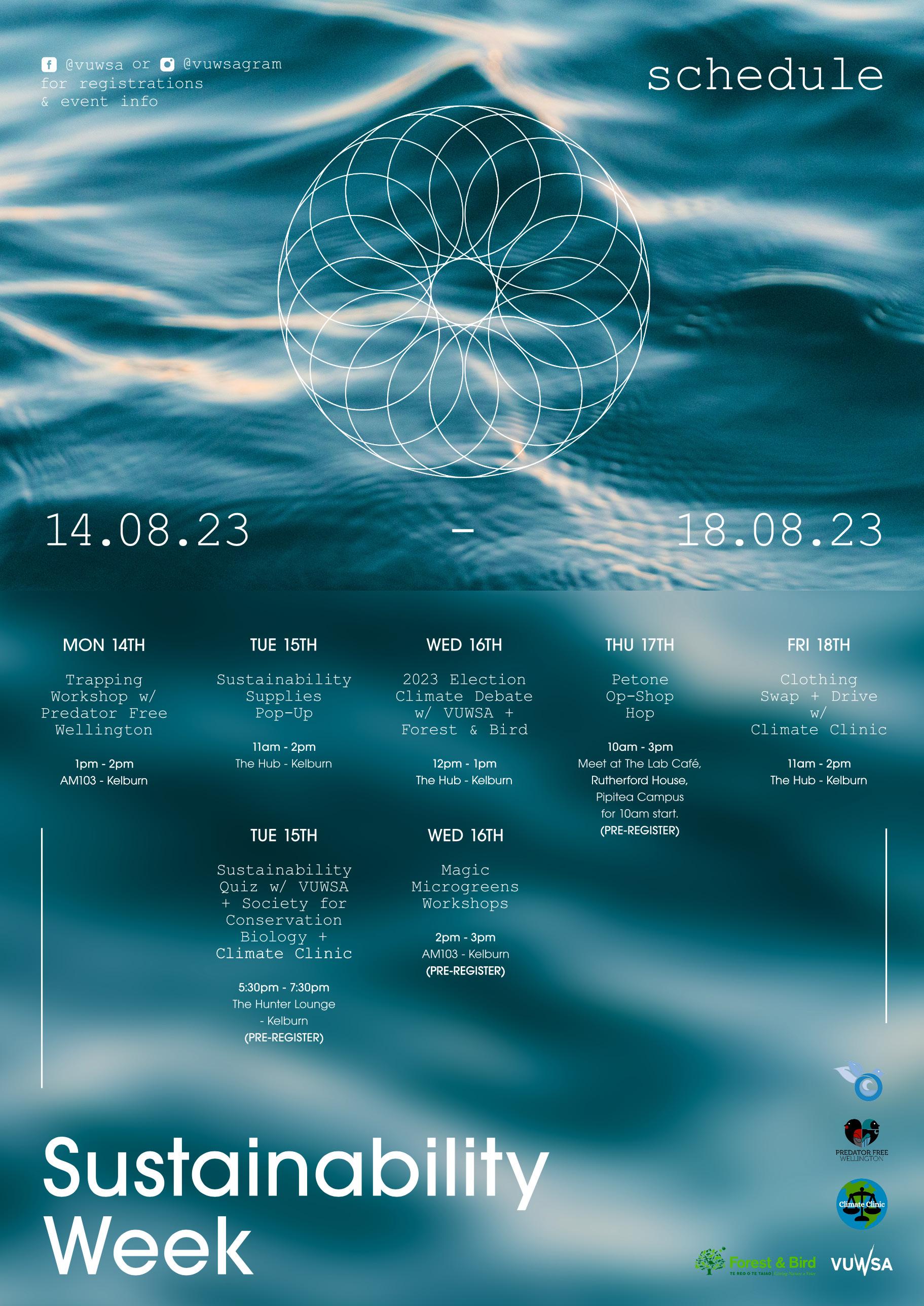
It’s Squid Game at VUW after 74 Staff Members Granted Voluntary Redundancy
Words
by Niamh Vaughan (she/her)
Seventy-four staff members have successfully applied for voluntary redundancy at Te Herenga Waka—Victoria University of Wellington. The university has released a new consultation document to staff detailing the roles, programmes, and academic areas that may be targeted for cuts and redundancies.
The university has faced very public financial challenges, forecasting a $33 million deficit in revenue this year alone. It was announced that the voluntary redundancies have aided the university in reaching one-third of its cost saving goal.
A spokesperson for VUW announced, “The university has [...] identified a number of programmes that have the potential to become sustainable using the additional government funding [and they] will be put on a managed pathway to achieve sustainability.”
These programmes include Midwifery and Workplace Health and Safety in the Faculty of Health; Secondary Teaching in the Faculty of Education; Earth Sciences (Physical Geography, Geology, and Geophysics) and Physics in the Faculty of Science; the English Language Institute (School of Linguistics and Applied Language Studies) and History in the Faculty of Humanities and Social Sciences.
Thanks to voluntary redundancy and a $12 million funding boost from the government, the initial number of expected job cuts has lowered from 275, and targeted

programmes in the university have gone from about 80 to 34. Whilst this, alongside the courses that have been recovered, is an improvement, the Tertiary Education Union (TEU) says there are still about 70 more jobs to go.
According to TEU organiser Nicki Wilford, “Bringing [that number] down is huge, but [the TEU] can’t go out and say this is a win.” She predicts the ‘selection pools’ required to determine which staff will stay on will be similar to the popular Netflix Show Squid Game. “[It’s] going to be absolutely hideous.”
In an area of the university required to cut back two senior lecturers with currently three employed in the role, the three staff members will have to compete for one job. “People [will] have to be super competitive with each other. And even worse, of course, many of them will be union members competing against other union members,” Wilford explains.
“[A staff member might choose voluntary redundancy] to avoid that. I know a lovely professor who's taking [redundancy] to save someone else's job.”
The consultation programme began on 2 August, and will continue through to 5 September. Final decisions will be announced on 21 September, the day after enrollments for 2024 courses open. For staff affected by the job cuts, reapplication to roles elsewhere in the university will commence throughout October.
6 ✦ Spirituality News the 14 August 2023 Issue Eighteen 03 ✦ NEWS ✦ KAWE PŪRONGO KAWE PŪRONGO
HOT TAKES Where do you think we go when we die?

Alex (he/him)
I think we're all fourth dimensional energy beings. We’re all being reincarnated over and over again through time and we’re gestating in this giant egg and eventually we’ll be able to go anywhere in the universe.

Lauri (any pronouns)
I would say we just kinda stop existing, except we would live on in memories and so on.

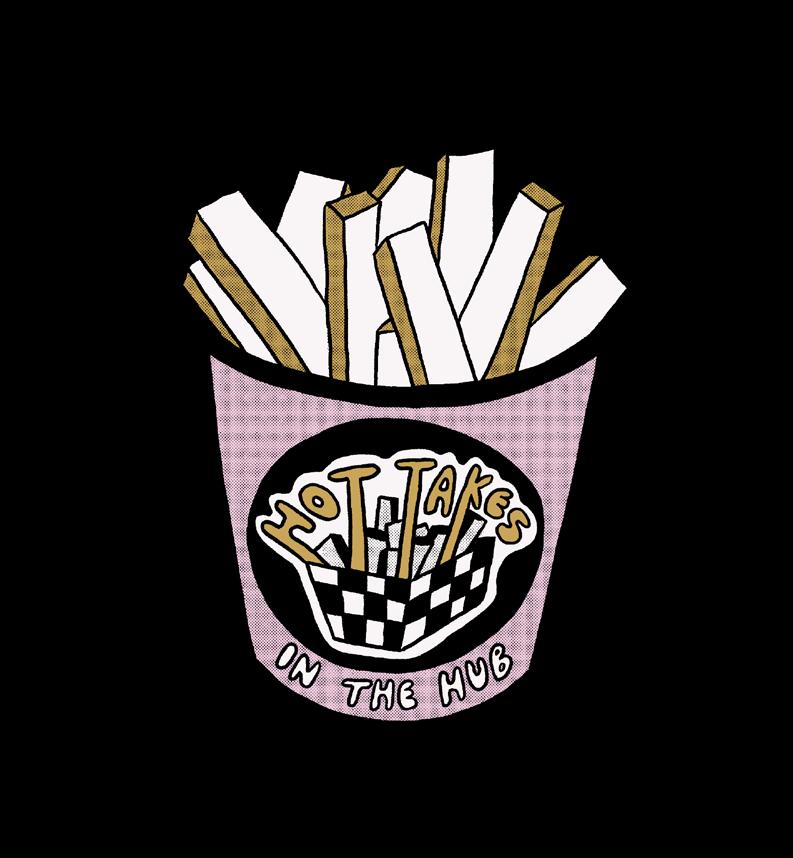
Nina (she/her)
I think the government uses our bodies to develop new GMOs to put in supermarkets.
Lyle (he/him)
I think our souls take the stripper pole down to hell like Lil Nas X and we just do drag down there.
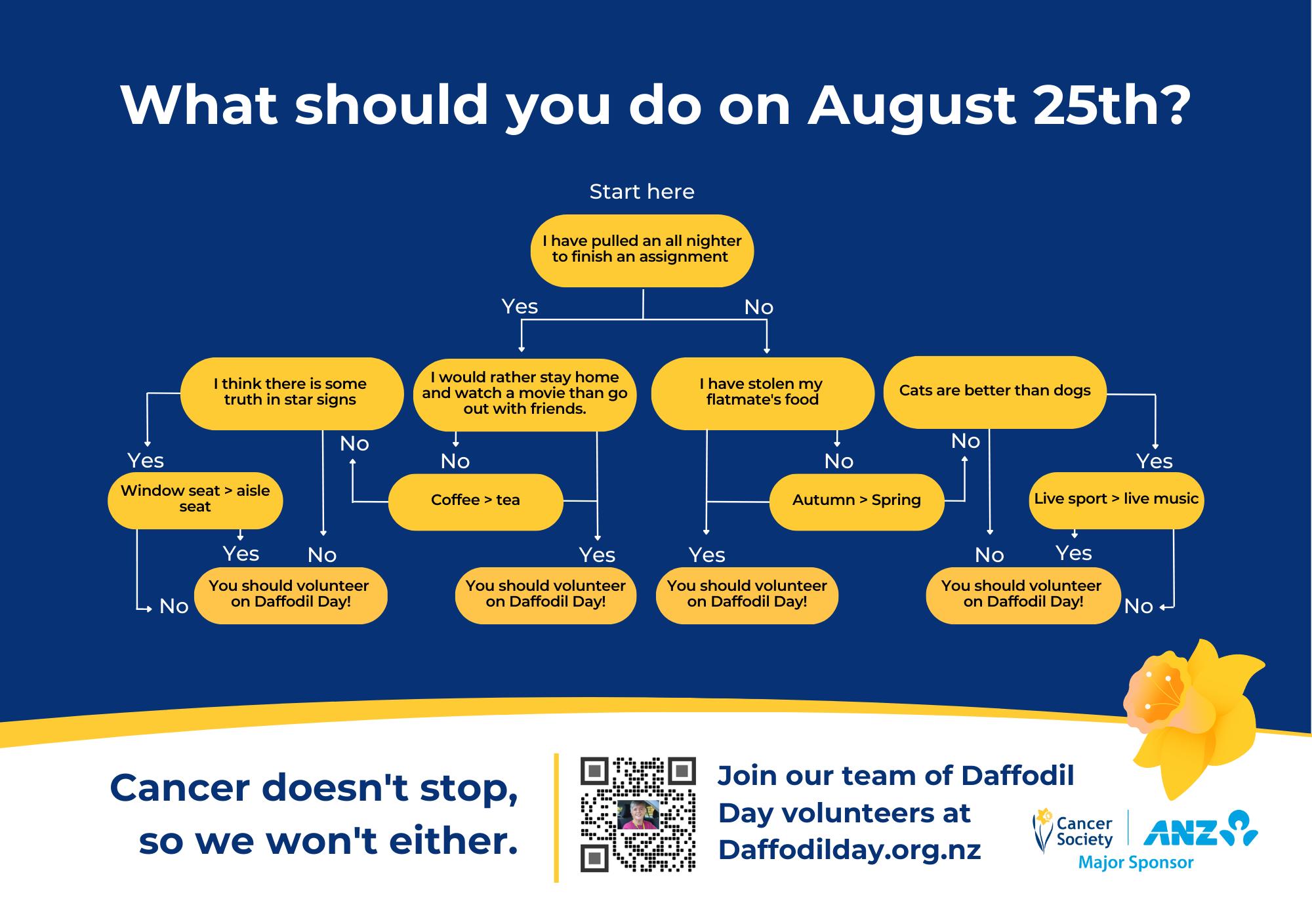
03 ✦ NEWS ✦ KAWE PŪRONGO
ELECTION CANDIDATE KŌRERO
IBRAHIM OMER
Words by Zöe Mills (they/she)
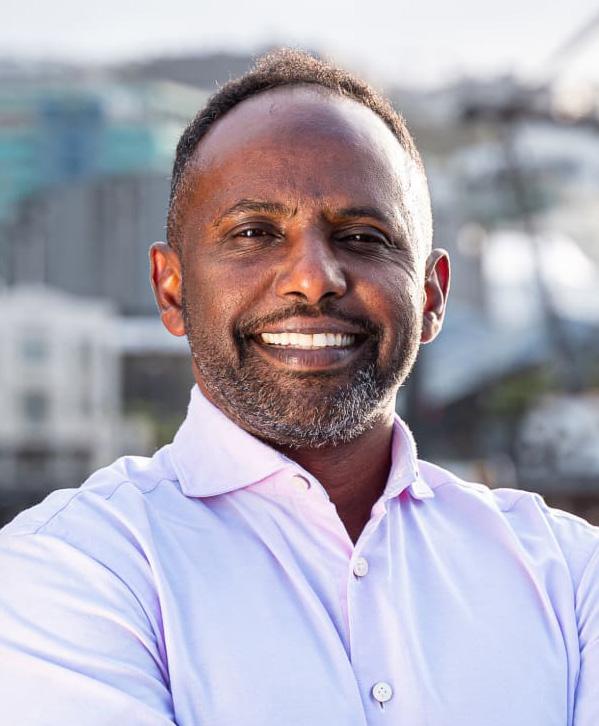
During his three years at Victoria University, Ibrahim Omer had a strict ritual every Friday afternoon: getting a coffee from Vic Books and a packet of sushi from Maki Mono. Omer looks back at this time with fondness, and expressed immediate concern at the lack of students on campus before we even stepped foot into the Salient studio “it's so quiet!”
Originally from Eritrea, Omer arrived in Aotearoa as a refugee in 2008, graduated from VUW in 2016, and in 2020 was elected to Parliament as a Labour list MP. His work has previously focused on advocating for low-wage workers,
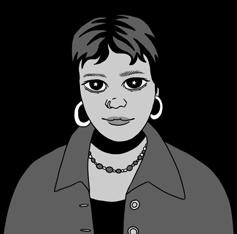
migrants, and refugees, but now the MP has joined the race for Wellington Central, hoping to follow in suit of his Labour predecessor, Grant Robertson.
“Now the time has come for me to take another challenge. And that's to serve the city that gave me so much,” Omer said.
Tertiary
Education, specifically tertiary education, is at the forefront of Omer’s mind when it comes to the electorate. “Victoria University is much more than just another educational institution to me, it's quite personal,” he says.
As a student, Omer also worked as a cleaner at the university, and mentions how he would work long hours for very little pay. “This university was a big part of my life. This is where I cleaned, this is where I studied. […] I have a lot of connections [to it], it's quite personal for me.”
As for the 275 proposed staff cuts looming over the university, Omer says he has been a vocal advocate for tertiary education and for staff facing job cuts. He is the deputy chair of the Education Workforce Committee, and says he frequently discusses the issue with the Education and Finance ministers.
“We know it's a big loss to our city and our university. And to me, [in] the last three years [I] have proven to be an unapologetic voice for my community. […] I'll be an unapologetic voice for Wellington [central].”
8 ✦ Spirituality
VOTE! ELECTION ✦ CANDIDATE KŌRERO
23
Housing
Like his opponent Tamatha Paul, Omer is a renter, and believes that the heart of the housing crisis is the city having a lack of housing supply. “We need to build more houses. And that's that's the bottom line,” he says. He also believes in the importance of living in a dry, insulated house, and describes periods where he fell sick due to dampness in his own rental.
The Post recently revealed that Omer has been based in Auckland since 2020, but relocated back to Wellington last month to campaign for the seat.
Omer cites the Warmer Kiwi Homes programme of Budget 2023 as something he’s like to continue to work towards, which has a goal to insulate 100,000 homes across the country. Although he says that “we’re not there quite yet [hitting the target]”, Omer affirms that he will continue to push for that goal to be met in Wellington.
Transport
Like a lot of policies, Omer was unable to confirm whether he was fully committed to certain projects—such as VUWSA’s Study Wage for All campaign. But for some, he’s completely transparent.
Omer describes himself as “someone who uses public transport regularly”, and believes in a fair wage for bus drivers and reliable transport for the public.
When asked whether he supports free public transport, Omer met the question with an enthusiastic “absolutely”— but he is unsure whether Labour will deliver it during his term.
“I believe in public and free public transport, [but] when it's going to happen, whether it's going to happen now, or in a year or two, three, that's another question. […] I'm more than happy to have a conversation with Wellingtonians from across the spectrum, to see where we can do better, what's working, what's not working.”
Omer has, however, voiced keen support for the Let's Get Wellington Moving project, stating, “My personal take is that we need public transport that's reliable and functional, [that] Wellingtonians can enjoy. So to my personal take on it, it's a good thing, and we need to stick to it.”
Cost of Living
Before entering politics, Omer worked as a union organiser for E Tū alongside other forms of community advocacy. A large chunk of Omer’s political career has been focused on continuing to advocate for a fair living wage and fair compensation to low waged workers. “I've chosen to be involved and dedicated my time and energy tirelessly to advocate for all low paid workers to be living or to be on living wage. And I will do that for students or anyone that needs my voice,” he said.
Although the student loan living costs were increased by $25 earlier this year, Omer says that it’s still “not enough”.
“We need to be doing more so that we can attract our young people to feel encouraged and to feel comfortable to go and study, because at the moment, student numbers are down. There could be many factors, Covid-19 could be part of that, and housing [affordability] could be a part of that. There’s a whole lot of things we can do to attract students to come back to Wellington.” Omer did not specify in particular as to how he would attract students back to Wellington.
Overall, Ibrahim Omer wants students to know that he understands what it's like to be a student, and believes in “investing in our young people”.
“I will be an unapologetic voice for students around the issue that they face. […] Keep questioning your politicians and challenging them.”


9 Te Taiao ✦ 03 ✦ NEWS ✦ KAWE PŪRONGO VOTE!
Listen to the full interview on Salient's Unedited Sessions podcast! Spirituality ✦
ELECTION CANDIDATE KŌRERO
SCOTT SHEERAN
Words by Ethan Manera (he/him)
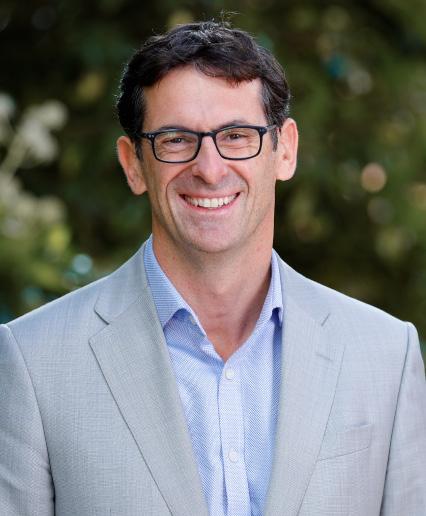
Dr Scott Sheeran has lived many lives before throwing his hat in the ring for Wellington Central. He went from being “famous for not turning up at school”, and sporting dreadlocks while in a university band, to becoming a published author on human rights law and working multiple stints at the UN.
Most recently, Sheeran has been in Abu Dhabi, working as senior legal counsel to the United Arab Emirates Government. Last month, he packed up and moved back to Wellington with his family to try his luck at politics.
Despite running for a seat that National hasn't won since 1978, he's confident that he has a chance. “I don't know what's going to happen, but I certainly don't feel like I'm somehow handicapped.”
“Maybe I'm an oddball, who knows?” he jokes.
Sheeran sat down with Salient to discuss his top three priorities for Pōneke: housing, transport, and investment.

Housing
Sheeran says Wellington’s rental woes stem from “an issue of supply”, and says that National “don't think that price controls, more taxes on landlords, asset taxes, and all that stuff” will resolve the issue. He supports National’s plan to allow more housing outside of city centres by getting rid of the requirement for councils to build housing under Medium Density Residential Standards, and allowing “greenfields” development on rural land.
Sheeran said National’s plan to build a road connecting Petone to Grenada Village “will open up housing space for about 5000 more houses in greenfields”. The party’s policy will also enable councils to zone 30 years worth of previously set aside land immediately, freeing up space to allow more houses to be built faster, which he calls a “really good plan”.
When asked how he would advocate to improve standards of poor quality student flats, Sheeran said that more development outside the city would improve the overall market, giving renters more choice.
“We've got to enforce standards. I think a lot of landlords are actually pretty decent at doing that,” he said. When asked if that meant he supported a policy to enforce the Healthy Homes Standards, Sheeran backtracked, “I really don't have an answer for that, because, partly, I haven't thought about it”. He said he was prepared to look into it, but noted it was not National Party policy.
“I've seen a few student flats. They are much better than what I used to live in in Dunedin, in that I didn't see health issues. But I haven't gone to some of the worst places in town,” he said.
As for his own personal housing situation, Sheeran is currently renting a home on Wellington's iconic Cuba Street. When asked, he also revealed he is, in fact, a landlord.
10 ✦ Spirituality
VOTE! ELECTION ✦ CANDIDATE KŌRERO
23
Transport
Sheeran is keen to scrap the contentious Let’s Get Wellington Moving transport initiative because “there hasn't been much action”. He supports the National Party’s new transport policy, which would see a second Mount Victoria tunnel, a four-lane highway through the city, as well as scrapping the plans for light rail, which Sheeran calls “a pipe dream in terms of the cost to benefit and the size of the population”.
He said the council's current approach of removing on-street parking to build cycleways is “killing the central city” as “lots of people are no longer driving in because they can't get a car park, and lots of businesses are really finding it quite hard”.
“I get that most students probably don't think much about cars because they’re like, ‘Well, I don't have a car.’ [...] But when you’ve got three kids, like I have, and a grandmother, you know, public transport is quite difficult.”
He acknowledges that roads are not the only solution, and says that National’s policy has been unfairly framed as extreme. “Busses are the future of public transport. We can have electric buses; we can build a little bit of extra capacity around the choke points; we can have a bus network that would serve us really well. I have to say, I've never been to the capital city of a developed country that has such a schmozzle as what we have on buses. Like, it's really crazy.”
Sheeran says that although he doesn't currently own a car, he is in the market for a new ride, and will “probably” get a Nissan Leaf. Asked if he would get a Tesla to match Christopher Luxon, Sheeran ruled it out with a firm “hell no”.
Investment
One of Sheeran’s top priorities is the economy, and as the Wellington Central MP, he says he would “try to make the place a bit more business friendly”.
“I talk to businesses who say they tell people not to start a business now because your rates are going up. It's all getting very, very hard.”
He says the city needs to be better at nurturing all businesses, especially social enterprises. “They hire people; they provide great jobs.”
He says that climate change comes under investment and is one of the policy areas he loves advocating for. “National has exactly the same target as the greens, we just have a different plan on how to do it,” he said.
National’s current climate change policies include increasing renewable energy generation by fast tracking the resource contents process, and lifting the ban on genetic modification to “give farmers the tools they need to reduce emissions, such as gene-edited crops, feed, and livestock”.
Students
While no tertiary education policy has been released by National, Sheeran hinted that such policy will be out before the election. He wouldn't be pushed on what it would include, but says the current first year fees free programme is “a poorly designed policy”.
He said that although he agrees with the objective of trying to increase enrollments in universities, he supports a means-tested approach, which would see only students from low income families receiving free tertiary education.
“What National doesn't do on tertiary education is just say, ‘[Here’s] lots more money, guys, we'll give you all free allowances, there'll be no university fees…’ That's BS, right, it's never gonna happen.”
Opponents
Sheeran takes an amicable approach towards his opponents, saying he respects anyone who runs for public office. In response to attacks from Green candidate Tamatha Paul, who recently called Sheeran out for “parachuting in from Abu Dhabi”, he says he doesn't feel the need to respond. “Candidates say lots of things, but that's not my style. [...] People will judge me for who I am.”
However, Sheeran was quick to give a shout out to The Opportunities Party candidate for Wellington Central, Natalia Albert, “because nobody else does”.
“She has this problem that nobody includes her in the discussion. They don't invite her to the debates or whatever, but she's got some very good ideas, and she's a good person.” He says that he “would work really well with her” if they both ended up in government.


11 Te Taiao ✦ 03 ✦ NEWS ✦ KAWE PŪRONGO VOTE!
Listen to the full interview on Salient's Unedited Sessions podcast! Spirituality ✦

PSA 2023 is a Shockingly Hilarious Take on NZ Politics
Words by Maia Ingoe (she/her)
At risk of sounding like a conservative commentator, PSA: Public Service Announcements: Election 2023 is not a play for the faint of heart.
The satirical take on New Zealand politics is back again for its fifth election cycle and 18th production, and no one—not even Chlöe Swarbrick—is safe. The chaotic comedy runs until 26 August at Circa Theatre and is a mustsee for any politics nerd (or anyone who despises politics).
To my immediate delight, the set is a playground, complete with a slide and monkey bars. There’s a set of ominous double doors centre stage and I blindly hope to see a politician burst through them. At first glance, I know the audience is in for some fun. The set provides endless opportunities for surprise entrances, three different levels, and all sorts of play. The show had me cackling at every turn, jaw dropped, aghast at the jokes made about politicians from both sides of the house.
With a cast of five, the show’s characters change faster than a Labour minister can fall from Cabinet. To pull it off, the actors had to be masters of characterisation and the art of a quick wig change, and they did not disappoint. Simon Leary was a standout in his character changes: from the last standing cis, white man of the Greens, James Shaw, to his seedy, Hutt Valley-born-and-bred take on PM Chris Hipkins, sailing onstage on a RipStik and cradling a can of Coke. Even National’s Chris Bishop was not safe from Leary’s spin, the character sporting a mullet and dimwittedly calling after Nicola Willis at every opportunity.
Bursting onto stage with unmatched energy, Carrie Green (Ngāti Porou) was another highlight, with her pūkana-serving
Debbie Ngarewa-Packer of Te Pāti Māori facing the audience straight on. Anya Tate-Manning’s innocent take on Chlöe Swarbrick left something to be desired, but all was forgiven with her razor sharp wit and piercing stare as the blood-sucking Nicola Willis of the National Party.
Written by seasoned PSA actors Thom Adams, Jamie McCaskill (Ngāti Tamaterā, Ngāti Rangi), and Johanna Cosgrove, the Election 2023 script takes the tomfoolery to a new level of unhinged. There is no limit on what is too irreverent or too silly, and the burns are roasting hot. The National Party are plotting evil, Sean Plunket comes out from under the stage as a transphobic zombie, and Winston Peters makes an appearance (played excellently by Jamie McCaskill). Watch your back—the kingmaker even has his own song. The cast pull through with the perfect amount of unhinged behaviour that the scriptwriting demands. As the butt of many, many jokes, ADHD is even acknowledged in the programme.
Each party has its own moment in the spotlight. The Greens abound with feeling circles and searching for the group chat leaker. Labour’s Chippy, Carmel Sepuloni, and Willie Jackson are grappling at the straws of a lost election. National’s Chris Luxon is delighted to have some time with the boys, and Nicola Willis cleans up his mess at every turn. Te Pāti Māori are on the hunt for racists. ACT’s David Seymour is dumb enough to have hung in there long enough to benefit from the National Party’s unpopularity (or is he?).
In an age when our political landscape seems increasingly hopeless, it’s refreshing to sit back and laugh as the ridiculousness of it all is put in the limelight. Take a night off from your existential dread with Public Service Announcements: Election 2023
12 ✦ Spirituality 04 ✦ ARTS & CULTURE ✦ AHUREA

Consumer Witches and Fake Crystals
Words by Niamh Vaughan (she/her)

Gen Z is fascinated by the occult.
There’s no denying it. 'Pick a Card' tarot readings run rampant across every social media platform; your best friend probably keeps a piece of citrine in their wallet in hopes of attracting financial abundance; witch-tok is a beast within itself, with users threatening to hex celebrities and lighting pink candles to honour Aphrodite; when you landed a job interview, your flatmate said they’d manifest a good outcome for you; even at the back of this magazine there’s a horoscope section that you almost definitely flicked to before looking at this feature. Metaphysical spirituality has a choke-hold on all of us.
Growing up, I was always around these ‘witchy’ practices. My mum had a tin of crystals and a deck of tarot cards that I used to play with all the time. She even had a set of runes I thought were Scrabble tiles before I was old enough to read. When I was a teenager, I started going to spiritual fairs: halls filled with ‘psychics’, tarot cards and readers, Reiki healers, and mountains upon mountains of crystals. It always seemed I was the youngest person in the room (except for the little girl who would talk to people’s dead pets), but as the years went on, the halls got busier and busier. Last time I went, I recognised so many people I knew.
About six years ago, I learned how to read tarot. I was 16-years-old and would beg people to let me practise on them. More often than not, no one was interested. But pretty quickly, momentum started to build up.
By the end of high school, I’d hear people showing off the crystals they’d stolen from Cosmic, and gemstones were hanging around everyone’s necks. Nowadays, I would never think to offer someone a tarot reading. I can’t go to a party without someone asking if I brought my cards. I get stuck in the corner of a dark room doing back-to-back readings while a huddle of onlookers watch me tell yet another querent to stop sleeping with their ex-boyfriend.
As resident Salient Wizard or horoscope writer I have frontline experience with the current thirst for astrological knowledge.
But, in my opinion, the headliner of Gen Z’s spirituality is crystals.
Just about everyone owns at least one, whether they believe in their metaphysical properties or not. Though this boom in interest seems novel, none of it is actually new. The crystal side of TikTok might be, but humans have had relationships with crystals since the dawn of time. Thirty-thousand-year-old amber amulets (not technically a crystal, but neither is obsidian, so I’m using ‘crystal’ as a broad definition here) were discovered near Hanover, Germany, and crystal healing is thought to have stemmed 6000 years ago in ancient Mesopotamia. You may have been on Instagram when you discovered moldavite, the crystal promised to have the ability to ‘completely fuck up your life, but like, in a good way’ (to quote an old friend). Really, moldavite was first discovered by prehistoric people in the Czech Republic up to 43,000 years ago.
05 ✦ FEATURES ✦ AHUATANGA
"As resident Salient Wizard —or horoscope writer—I have frontline experience with the current thirst for astrological knowledge.
But, in my opinion, the headliner of Gen Z’s spirituality is crystals."
Susan has run the crystal store The Capricorn Spirit for eight years, first launching it in Levin before opening a second branch on Willis Street last year. She describes her business to me as a “holistic health shop” with a focus on crystal healing. The few tarot and oracle decks she sells are not for fortune telling, they are a mindfulness tool to aid in being more conscious and aware of oneself. Susan has also noticed a sudden influx of interest in crystals, noting how other spiritual shops seemed to have “all of a sudden” appeared in the past year or so.
As a Bachelor of Science graduate, Susan noticed a gap of knowledge and information in the crystal market. “I realised [there] wasn’t a really good crystal shop [near me], and there wasn’t good knowledge about crystals and the science behind [them],” she told me. Susan describes herself as a “crystologist” who combines her geological background with her metaphysical knowledge, using her understanding of crystal systems and structures in her healing practice.
With the new era of spirituality and the widespread popularity of crystals comes a sudden and immensely profitable market. It’s not just the spiritualists or healers like Susan who can get behind the healing. The capitalists can too.
The market has been overrun by what Susan calls “imposters”, a title describing crystals that have either been dyed, heated, or essentially spray painted through
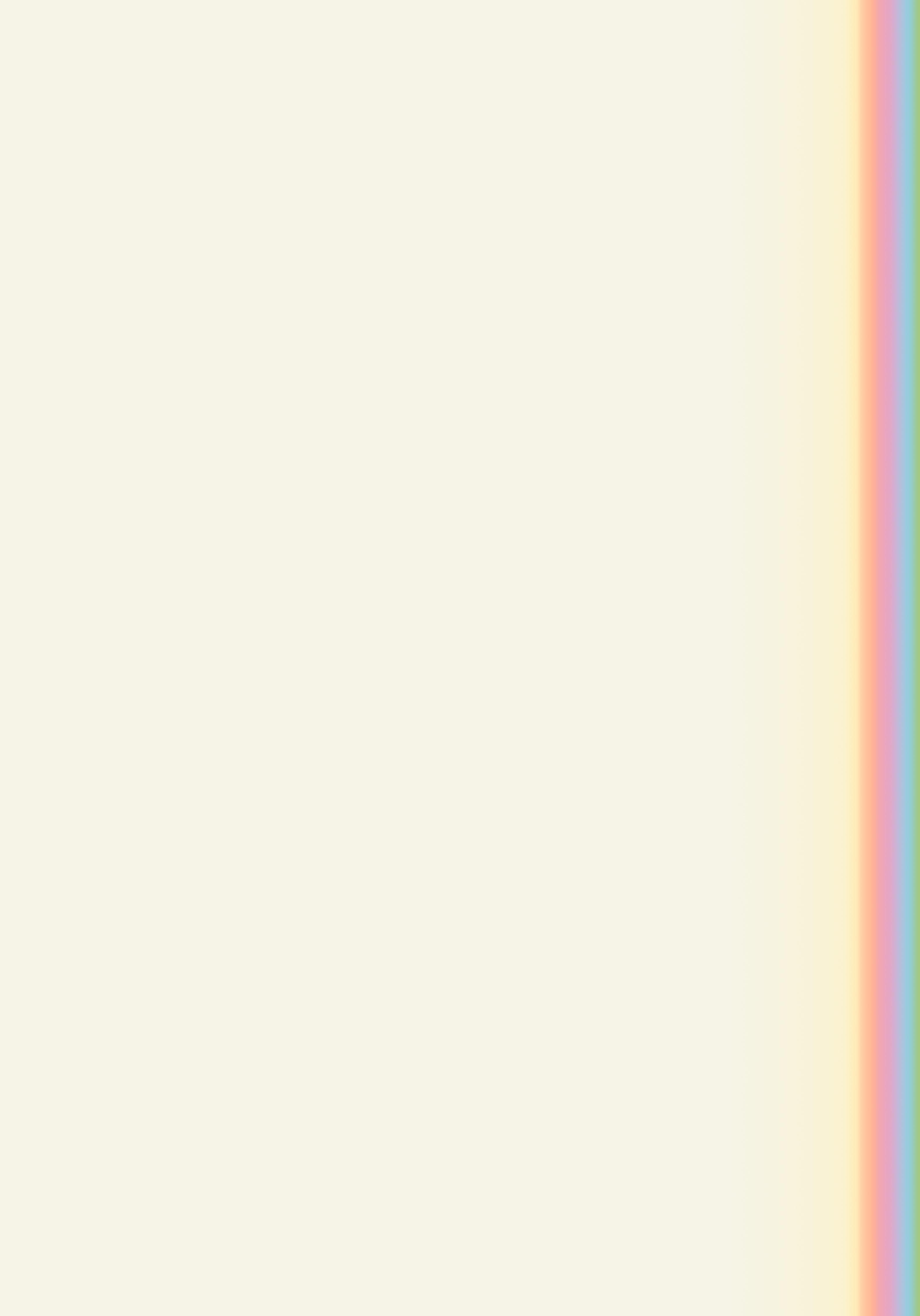
to ‘crystals’ that are actually man-made glass or simply plastic. Sorry to be the bearer of bad news, but your piece of moldavite? If you didn’t pay a top dollar price—we’re talking $300 to $400—then it isn’t moldavite. That glass wasn't forged by a meteor but by a man with money on his mind, especially if the piece is bigger than the size of a fingernail. Goldstone is produced in factories, opalite (which I’ve sometimes seen sold as an imposter moonstone) looks like foggy, rainbowcatching plastic because it is, and malachite is usually just malachite powder mixed with resin and painted.
There isn’t necessarily something wrong with buying imposter crystals. Not everybody buys them for their metaphysical properties, some are just interested in finding something that looks nice to put on the shelf. The problem is that most buyers don’t realise they’re forking over their cash for something fake, whether they’re buying with spiritual practices in mind or not. A crystal seller that advertises imposters for what they are is a rare thing, and that’s if they even know that what they have is fake in the first place.
For Susan, if your intention when buying a crystal is to work with its energy, then the imposter crystals are a nefarious thing. “[Altering the crystal] kills it, from my perspective. [...] By buying even a [dyed crystal], you’re not buying anything. You’re buying a dead crystal.”
To her, it’s like the difference between a cow and a steak.
05 ✦ FEATURES ✦ AHUATANGA

“The reason a crystal is a crystal is because it has a regular repeating structure pattern. Each cell repeats over and over again. And that cell structure is perfect. [...] That's why its energy is perfect. It takes hundreds of thousands of years [before crystals form] and we dig them up.”
Altering the crystal with dyes and heat changes this structure and any metaphysical ability it may have.
Currently, there are no crystal selling regulations in New Zealand. There is nothing protecting a buyer from walking into a shop looking for blue obsidian and walking out with cyan-coloured glass. There is nothing preventing someone putting a toxic or dyed crystal in one of those expensive bottles promised to ‘cleanse’ your drinking water. There is nothing stopping a large factory from heat-treating ametrine and selling it to you as citrine (if that piece you keep in your wallet looks like an orange amethyst, you have an imposter on your hands). Everybody wants a cut of the nearly $5 billion industry, whether they have any expertise, or even interest, in crystals at all. “I’ve seen people selling moss agate as ocean jasper,” Susan said, “usually because the seller just doesn’t understand [crystals].”
Misinformation is rife in the crystal community, thanks to imposter crystals, a lack of real geological knowledge or government regulations that protect both buyers and sellers, and the virality of TikTok. When TikTok’s trend cycle popularises a particular crystal, it drives demand for a finite resource, resulting in imposters flooding the market. Shortly after, the cycle repeats with a different mineral. Susan saw it happen with moldavite, and can see consumers’ eyes wandering to things like tiger’s eye and blue-lace agate.
“No crystal comes into my shop unless I’ve gone in person, felt it, and made sure its energy is okay,” Susan says. “[I also try to source] from sustainable [miners] as much as I can.”
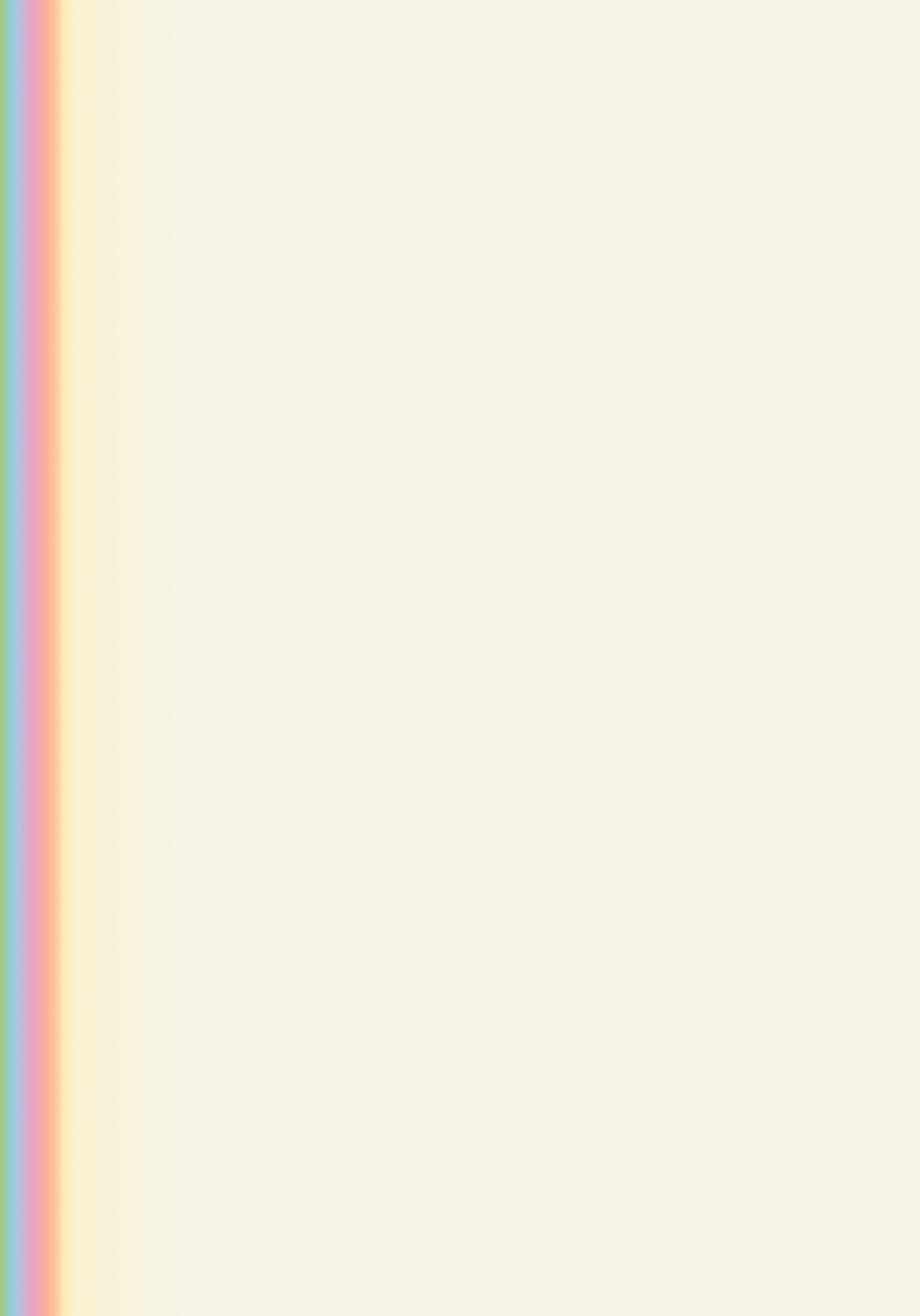
Here is the rub: many crystals are not ethically sourced, and since crystals pass through many hands before being shelved at a wholesalers, it can be incredibly hard for shop owners to trace what mines and conditions they come from. So even for sellers with ethics on their mind, it can be hard to guarantee what mine a crystal came from.
Typically, specific minerals and crystals can only be found in one part of the world. It’s not uncommon for these areas to be bought out by a singular company wanting a monopoly on a certain ‘product’ and mining it dry. Some of the worst suppliers even rely on child labour to get their hands on a profit.
Susan likes to know where her crystals come from and does her best to buy from small, sustainable mines when she can. She recommends having a chat with the owner of whatever crystal shop you go into and asking about the origins of their crystals. Study up on where certain crystals are mined—if a seller says their Caribbean calcite is from a place other than Pakistan, it’s not authentic. Personally, if I walk into a shop and see bismuth or opalite being sold as natural stones, I walk out again. Either the seller doesn’t know what they’re doing or they don’t mind being dishonest. Buy with intention and commit to the process of finding the right crystal for the right purpose.
Crystals are undeniably beautiful: and 40% of Salient’s voting Instagram followers believe in their metaphysical properties. But if you want to make more informed decisions when purchasing, maybe don’t source all your information from TikTok. The Capricorn Spirit runs courses on how to spot imposter crystals and how to actually use your crystals for healing. Judy Hall’s Crystal Bible series is a great place to start building up your background knowledge. Don’t trust websites that have a product to sell. Ask before you buy, learn what you can, and maybe rethink buying that piece of moldavite.
05 ✦ FEATURES ✦ AHUATANGA
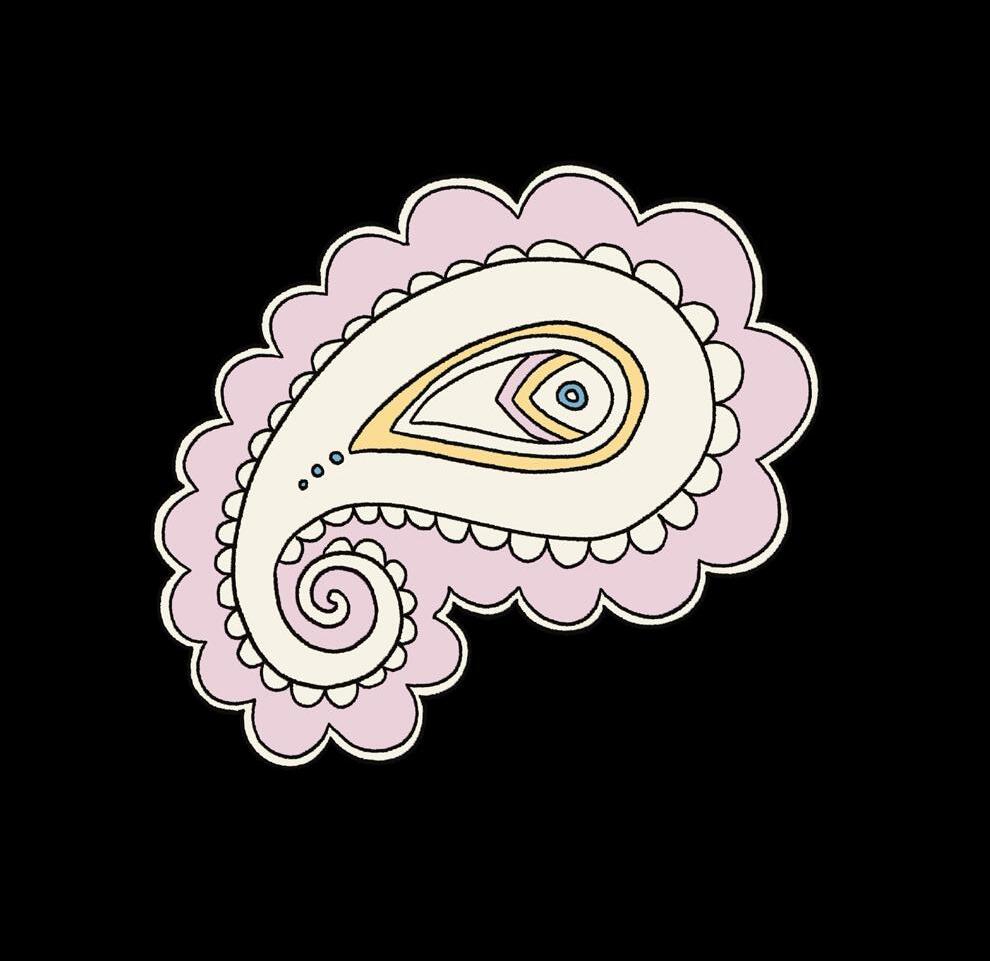
Selling Spirituality
The Problem with Using Culture as a Commodity
Words by Jia Sharma (she/her)
Let me start by saying that I love The Third Eye as much as the next person.
I love buying cute crystal jewellery and elephantprinted bags. I can’t walk up Cuba Street without stepping into that incense-scented store.
I love explaining what certain imagery, words, and symbols mean to my friends. The Third Eye is filled with aspects of the culture I grew up with, from the silk skirts that I still trip over every Diwali, to the henna that was a staple of every wedding I’ve ever been to. You step into the back section of the store and it feels as if you are no longer in a shop you’re in a whole new continent. All the price tags and tills disappear. The Third Eye makes me feel represented in this country so dominated by Western standards and influences, and it’s warming to see people from different backgrounds enjoy the wonderland of treasures in that store as much as I do.
However, I reach my tipping point when I think too much about the reality of stores like this one. I realise how much consumer culture and the industrialisation of spirituality have twisted my culture into an accessory and spectacle.
To Western society, our cultures are like a new and sparkly shopping mall from which they can cherry-pick customs, traditions, and practices to suit their needs. Corporate America has turned the Buddhist concept

of mindfulness into a productivity tool to help solve workplace grievances, passively argue through emails, and fire employees. I cannot express how much I cringe whenever a yoga or meditation scene comes up in a movie, and I have to listen to the exaggerated chants of the white character who now calls themselves a guru (the entire scene is always full of mispronunciations). When I finished writing the draft for this piece, I sat down with my friends to watch our daily episode of Two Broke Girls. I was hit in the face with a joke that misused a Hindu phrase in the most offensive way possible.
In recent years, we have seen the emergence of this new kind of ‘wellness’ business on social media. This cultural misrepresentation is especially present as part of the constantly growing ‘New Age’ spirituality community, which follows the cycle of disrespecting cultural origins while claiming to be authentic. Traditional practices are left not only misrepresented but also aestheticised for the profit of others. The cult of wellness and yoga is dominated by green juice lululemon influencers who are uninformed about the cultural significance and meaning of the practices they preach online. I think I would go into a coma if someone told me to ‘namaste all day’, which is a quote I found on way too many Etsy t-shirts during my research. It doesn’t actually rhyme if you use the correct pronunciation.
05 ✦ FEATURES ✦ AHUATANGA 16 ✦ Spirituality


The lack of people of colour as prominent members of this New Age yoga and mindfulness community is incredibly annoying, considering the fact that the practice of yoga was banned in India under British rule for being ‘too sexual’. Over time, this misinterpretation has continued, and spiritual practices such as meditation and yoga have lost their religious and symbolic meaning. They are reduced to no more than a commercial spectacle. Dr Sara Rahmani, a Religious Studies lecturer at Te Herenga Waka, discussed this with Stuff journalist Ripu Bhatia. “Yoga is typically taught divorced from its spiritual and philosophical underpinnings. Instead of helping the practitioner to achieve spiritual enlightenment, it is helping them develop stronger core muscles.” Wellness through the lens of influencers holds more appeal to consumers than both authentic spiritual wellness and simply going to the gym. This is all in the vein of taking part in something that appears ‘unique’ and ‘exotic’.
In addition to practices, cultural symbols have become dislocated from their religious and socio-political meanings due to the media and consumer culture distorting them. Symbols such as Om, the iconography of gods, and statues of Buddha are used as decorations and have very little to do with yoga. There is a difference between bringing symbols and their associated meaning into a space and simply plonking them in for visual effect. Sometimes people need to be told that the pretty elephant necklace they’re wearing is not just a pretty elephant necklace and is actually a significant god.
I’ll admit that it’s hard to watch people treat culturally significant symbols and ideas ignorantly. I was discussing this topic with my friend Siddhi, who said, “It’s different when they understand the origins of what they’re wearing and how to represent them, but I hate when people take cultural imagery and clothing and label their style as ‘hippie’ or ‘witchy’ when they are just wearing some ethnic jewellery and a flowy skirt.”
The Coachella music festival is controversially marked by the recurring presence of cultural appropriation over the years. The use of bindis, for example, became a ‘new trend’ and popular accessory for festival goers in 2015. In 2017, Amazon was criticised for selling shoes with Mahatma Gandhi’s face printed on them and doormats depicting the Indian flag, which is a crime in India. This fascination and desire to participate in the ‘exotic’ has been present since Western and Eastern societies met. Celebrating and appreciating multiculturalism is politically progressive, but I don’t think taking advantage of other cultures to build a platform counts.
This misrepresentation and appropriation might seem insignificant to those on the other side, but it harshly affects the cultures being taken advantage of. Due to this consistent misrepresentation, people now see a distorted version of Indian cultures made up of Karens in tree pose and Sanskritinspired tattoos. This often leads to a negative view of traditional cultural and religious practices when it’s not the watered-down, yoga mum version that perpetuates Western ideals. They are seen as outdated and archaic.
Honestly, I didn’t think I had a massive problem with this issue until the 260-word mark of this piece. But it’s hard to watch your culture become a commodity, and see others be praised for something they learned on a week-long retreat to Bali when you never received that same praise for being born into it.
I don’t want my culture to be ‘entertaining’. I don’t want it to be a two-minute butt-of-the-joke in an Adam Sandler comedy. I don’t want the burden of being ‘exotic’. I’ve seen so many people refuse to acknowledge or learn the origins of these practices because it means realising and admitting they’re not representing them correctly. The appreciation of religious Indian traditions is lessened as a result of more attention and online traffic being directed to white wellness influencers. Those trying to share their own culture aren’t even given a chance. While doing research for this piece, I struggled to find a prominent person of colour in the NZ spirituality and wellness industry. The ‘evolved’ perception has been so popularised that authentic methods and practices are pushed down.
Ignorance is not bliss when it comes to using other people’s culture for your own social and financial gain.
This phenomenon is not new, and it has been discussed time and time again. The commercialisation of spiritual practices and imagery has always been criticised, yet the appropriation and disrespect continue. I’m not trying to stop people from other cultures from participating in mine. I think it’s great when done correctly. Misrepresentation is the problem, and it’s not the right way to immerse yourself in another culture.
If you want to take part in the spiritual practices of Indian cultures, do your research. Google the meaning of the symbol you’re wearing, find authentic yoga classes by Indian people, and think before you type #hippie in your Instagram caption. Educate yourself so you can properly appreciate other cultures. That’s the bottom line.
05 ✦ FEATURES ✦ AHUATANGA 17 Spirituality ✦
Mother Mary & the Side Wound
A Trans Reading of Catholic Idolatry
Words by Willem Koller (he/they)
“God blessed me by making me transsexual for the same reason God made wheat but not bread and fruit but not wine, so that humanity might share in the act of creation.”- Daniel Mallory Ortberg
Ihave never been a practising Catholic, apart from the one Christian summer camp I attended when I was 8-years-old. An acne-ridden teenager I met there told me I would go to hell if I didn’t accept Jesus Christ as my lord and saviour. Other than that, I grew up not giving religion much thought.
My brain has always been hardwired to gravitate towards the gaudy, garish, and extreme, and as a preteen with unrestricted internet access, that’s exactly what I went digging for. Pinterest and 123movies quickly became my best friends. Cut to a decade later, and my lifelong devotion to pop culture has resulted in two and a half years of a Film and Media degree. My favourite hobby is still obsessively excavating the media I consume for queer undercurrents.
As a baby queer and budding film nerd, I fell in love with John Waters and his lurid film Mondo Trasho. I especially loved the sequence in which drag queen Divine, in orgasmic, religious rapture, sees visions of Mother Mary as she begs to be freed of sinful desire. The next obsession that blended queerness and Catholic imagery was, of course, Buffy the Vampire Slayer, and today some of my favourites are Sebastine and The Holy Mountain
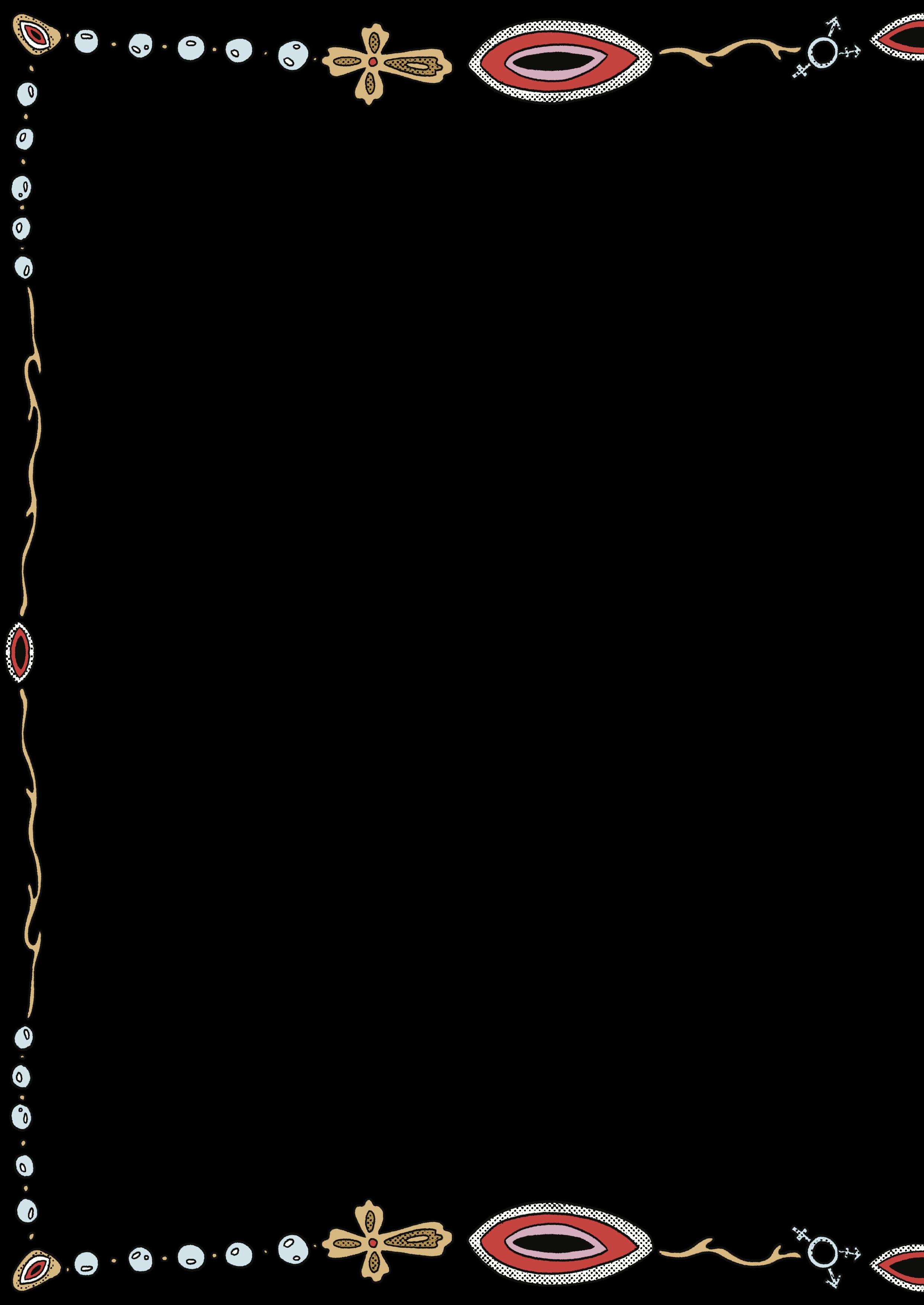
I remember stumbling across an Andy Warhol interview where he discussed being too young to understand the Catholic doctrine but loving Sunday service because he could tune out and just admire the spectacle. This is very similar to my experience. I have only the most rudimentary knowledge of Catholic philosophy, yet I can’t help but admire the grandness of clergy robes and nuns’ habits, the delicate elegance of a rosary, and the magnificence of the church’s stained glass windows.
There’s no denying the aesthetic beauty of Catholicism, but on a deeper level, there's also something fascinating to me about their strict dichotomies. Heaven and hell, sin and virtue, man and woman. Take this with a grain of salt, as I am terminally indecisive, but it seems almost unfathomable to me that anyone could be that certain about anything, let alone something as serious as one's own faith.
The more I fell down YouTube and Wikipedia rabbit holes, however, I discovered a surprising expanse of grey area. It was recently, as I was coming to terms with my transness, that I discovered Catholicism is bursting with surreal uses of the body. The ritualistic use of symbols stands in for physical change and allows for a metaphorical rebirth and spiritual salvation. Strange, abstracted uses of the body such as the worship of the sacred heart or Eucharist to me seemed so ripe with trans subtext that it reminded me of some of my favourite trans-coded films, like Titane and The Skin I Live In. Because it coincided with an era of scrutinous consideration of my own body and my relationship to it, I found it surprisingly moving to see these themes reflected back to me.
18 ✦ Spirituality
05 ✦ FEATURES ✦ AHUATANGA
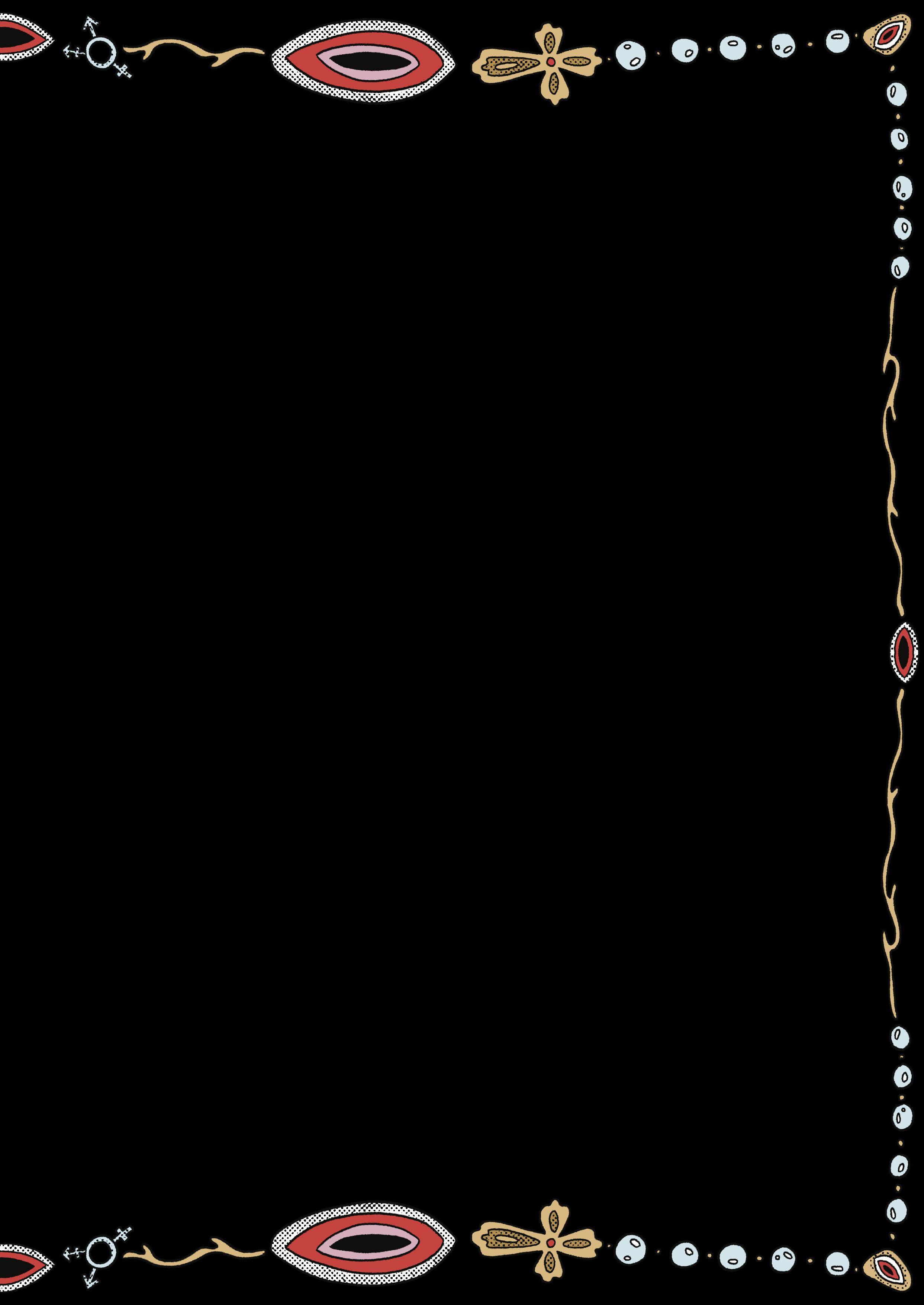
Just like trans people, Catholics have a unique approach to the human body as a surface to place meaning upon that can transcend conventional biological boundaries. For example, they believe the Pope is the physical representation of God on earth. Their doctrine twice explores the solitary creation and birth of a sacred figure from a body of the opposite sex, first in the story of Adam and Eve, then Mary and her son Jesus.
Mary is one of those prevalent symbols of womanhood in Western culture, but I’m interested in Mary as a symbol of gender transcendence. She is the highest Catholic saint, and as such, her image has undergone infinite representations in a way that has heightened the incorporeality of her flesh. Despite being the archetypal Mother, the divine feminine, her experience of motherhood was divorced from the biological realities that were believed to have made her ‘unclean’, such as sex and menstruation. Her womanhood is abstracted from the traditional cisfemale biology, becoming reliant on the performance of typically feminine rituals without the cisgender bodily experiences of these tasks. Mary’s estrangement from female sex characteristics makes her a potently trans figure in my eyes, an example of the ever-fracturing representations contained within her idolatry.
My favourite example of gender transgression in Catholicism is the worship of a wound in Jesus’ side that was pierced after crucifixion to check if he was dead. The wound is described as explicitly vaginal and was worshipped as a holy symbol in itself, much like the sacred heart. There is no shortage of artwork and hymns about it.
During a period in the 18th century, there was a denomination called the Morivians that were devoted to the side wound, painting themselves kneeling inside it and waxing lyrical about its warmth and protection. They described kissing it or drinking from it in states of religious ecstasy, and in their hymns they lovingly described it as a womb that could incubate its devotees and they could be reborn of. The theory about this phenomena has noted that Morivian women would come to find further resemblance with their saint, as his hermaphroditic anatomy was thought to heighten their connection to him. There is of course an obvious trans, intersex nature to this idolatry of the vaginal wound, but as I dug deeper into its function within the religion, it got even trans-er.
The little Bird finds presently, Its Nest in the dear Cavity, From Whence the Church was dug. - Excerpt from a Morivian hymn
The blood and water that poured from this wound in artistic renditions represented salvation, like baptism. It functioned as a symbol for the physical sacrifice Jesus made for the forgiveness of humanity’s sin. A physical incision in the body that results in a metaphorical rebirth and personal salvation? What could be more transgender than that? When I try to conceptualise the gravity of this salvation, I can only liken it to the feeling of my first testosterone shot: a feeling of rebirth into my own body.
The way that Catholics use bread and wine to symbolically consume the body and blood of Christ displays the liminality with which they understand the physical bodies of their deities. The ritual possesses an uncanny similarity to the way I understand my own physical liminality as a trans person. I have felt extreme alienation from my own flesh. My body has felt like more of an intangible, unknowable concept, seen and understood in completely different ways to all who have ever known it. That's why I feel connected to these figures whose transient bodies have been the subject of centuries of conceptualisation to the point where the reality of their physical form has become unclear. They have been dissected under countless cultural knives and are, in essence, immortal in their cyclical regeneration.
I know that seeing Mary and Jesus as trans figures is not universal by any means. But to me, the power of idolatry is in the ability to find your own meaning within these figures. Although I do not feel drawn to abide by the rules of the Catholic faith, the comfort I find in their idols transcends is guttural and emotional, not logical or rooted in any theology. Past the obvious physical features of their gender transgression, Mary and Jesus make me reexperience the familiar ache of possessing a body that doesn’t belong to you. To be a symbol is to have your body be owned by those who make meaning out of it. Mother Mary and her son Jesus hold within them all of the interpretations of all those who have ever known them. Like trans people, they are metaphysical, imbued with duality, and all the more holy because of it.
19 Spirituality ✦
05 ✦ FEATURES ✦ AHUATANGA

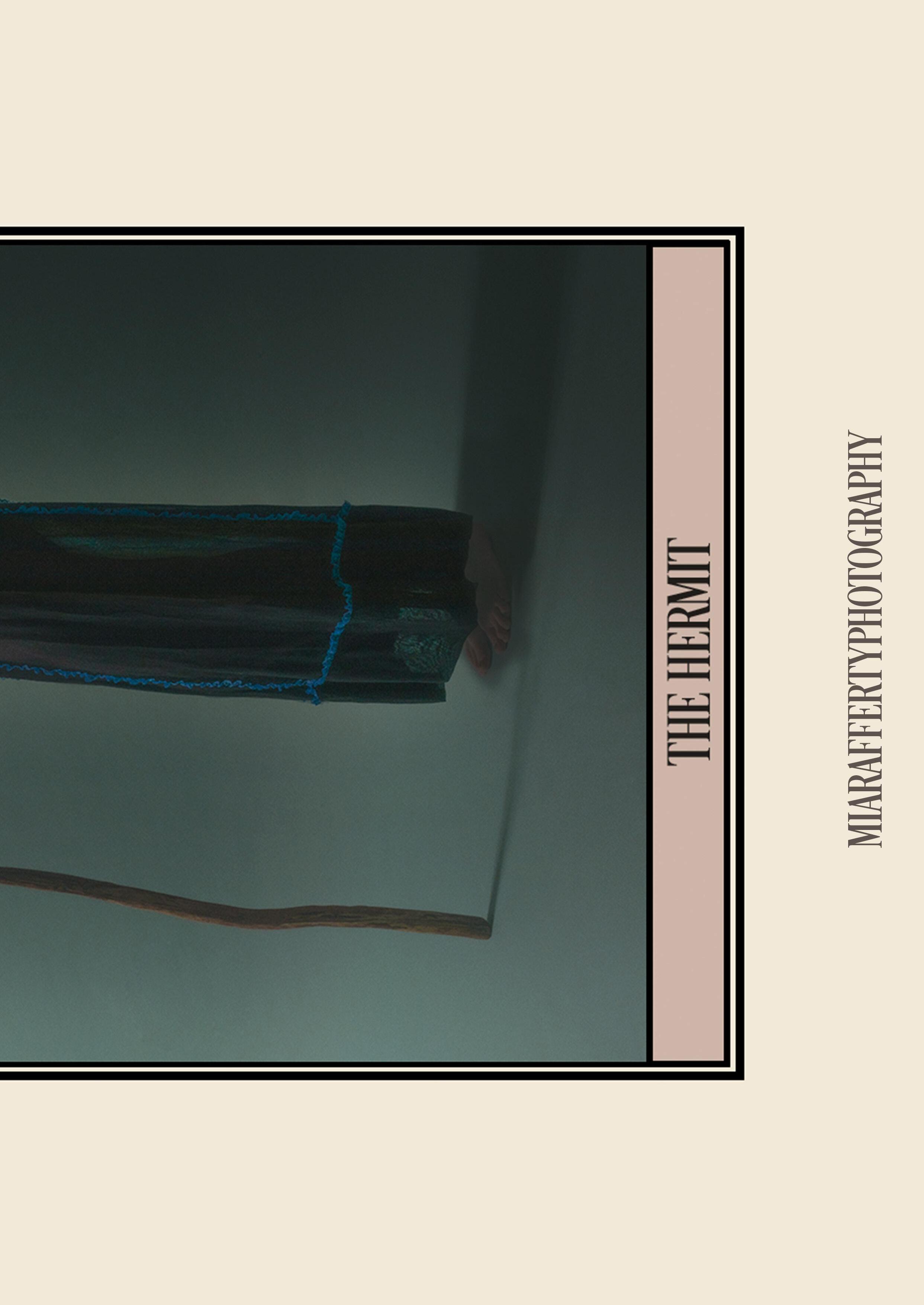
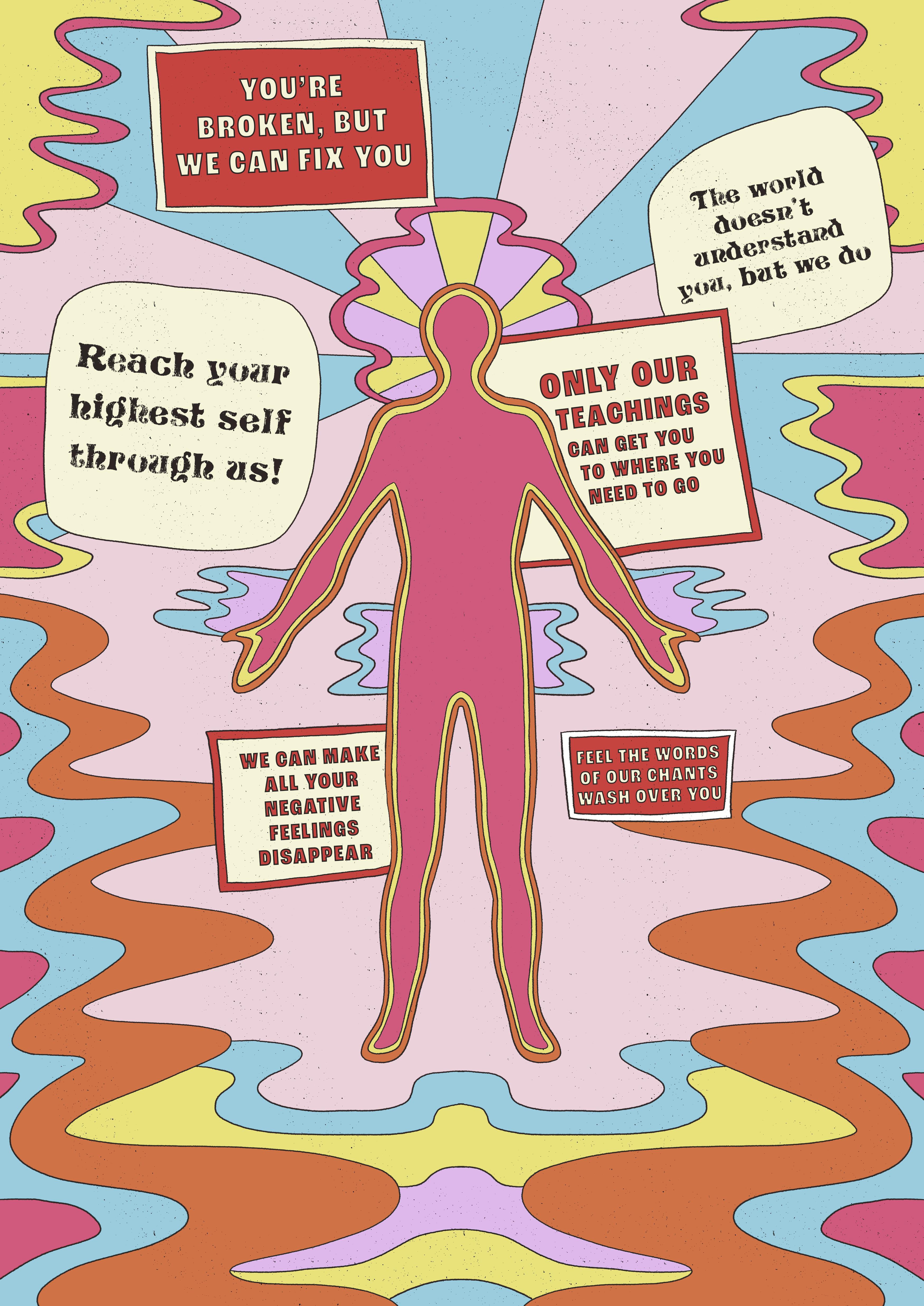
I Almost Joined a Cult, and So Could You
Words by Kiran Patel (he/they)
If you told me that I would join a cult because my pants were too tight, I would’ve laughed and thought you were taking the piss.
But on one particular Tuesday afternoon, it was the straw (or the inflexible elastic waistband) that finally broke the camel's back.
I managed to keep it together as I dragged myself out of bed on the three hours of sleep my party-heavy neighbours allowed me. The violent Wellington winds whipped me across the city to finish an ungodly amount of uni work, anxiety and stress coursing through every cell in my body. I dug my nails into my palm as I trudged up the steep steps from Boulcott Street to The Terrace, battling the sideways rain threatening to throw me back down the hill. I extinguished the anger boiling in my chest when I finally reached the foyer and realised that I had forgotten not only my lunch, but my notebook and laptop charger too.
I persevered with all my might, hanging on the few shreds of motivation I had left to march myself over to the blue zone with the promise of being back in isolation by the end of the day. ”Just finish your stupid readings that you don’t understand, write your stupid presentation on stupid Freud, and finish your stupid thesis that doesn’t make any sense. Then when you’re finished, you can crawl back into bed and watch Indian Matchmaker until your brain melts from the stupidity, and do it all again the next day,” I told myself.
When I finally managed to find a desk and open my laptop, my organs suddenly registered the pain of being crushed by a pair of thrifted Glassons high-waisted pants. I had no way of unbuttoning them without looking like a public menace, so I gave up. I buried my head in my hands.
As fake as it might sound, the pants were like a physical representation for the magnitude of what I was feeling in that moment. Day after day, it felt like the neoliberalist agenda was killing me softly with its claws. I had been spewing out more productivity and perfectionism than I could possibly muster up on my own, and now this blank Google doc was glaring back at me, demanding even more. I realised that somewhere, somehow, my entire worth had been reduced down to how many words filled up the screen. And it was never enough. As I looked across the floor at the myriad of bodies sitting behind partitions busying themselves with the next reading or assignment, I had never felt more alone.
Rather than slumping back home as I planned, I dug up the strength to be proactive and go to a yoga class I had seen advertised. To be honest, the place had always given me slightly culty vibes. It screamed New Age enlightenment with a tinge of white saviourism, things I had always tried to steer clear of. But I was desperate to try something to make me feel better than curling up in bed and wallowing, and cheap yoga during a cost of living crisis seemed like the perfect place to start. Plus, I knew that my critical thinking skills would keep me out of any remotely fishy situation. After all, there’s no way I’d ever be stupid enough to get involved in a cult, right?
Well, that’s not quite how it works.
I don’t think anyone that becomes embroiled in a cult does so with the intention of renouncing all their earthly possessions, living on a remote commune, and sacrificing their lives under the belief that a UFO ship will come and carry their souls to heaven. Cult members, as much as we might refuse to believe, start out the same as you and I. They’re messy, flawed, creative people that usually want to better themselves, do good in the world, and somehow make meaning out of the nothingness that is our existence.
Cults capitalise on the inevitable tough times we’re bound to face in life, dress their dogma up for us, and serve it on a perfect platter of absolutes. They somehow have solutions to our existential crises, the tools to enact radical change, and a built-in sense of community that we all crave. According to sociologist and cult expert Dr Janja Lalich, cults most often prey on idealistic and ambitious young people that are in periods of situational vulnerability. “The desire to improve oneself and/or the world around you is the most commonly shared motivator amongst cult members. People who arrogantly think they are too smart for a cult are often the ones who get sucked in because they don’t have their guard up,” Lalich writes.
The aftermath of pants-gate had caught me off guard. I was physically and emotionally exhausted, struggling under the weight of stress and loneliness. It felt never-ending. Luckily for the yoga group, I was the perfect target. I was greeted at the door with wide smiles and even wider collection boxes, gladly accepting a potent dose of sugary sweet tea that filled me with euphoria before I’d even started exercising. Their team showered me with love from all angles, hurling rapid fire questions at me about my beliefs, my passions, and the life I had beyond materialism. “That’s so interesting,” they repeated every time I spoke. For the first time in days, I felt like a real person, rather than a ChatGPT bot forced to produce endless amounts of prompted information.
23 Spirituality ✦ 05 ✦ FEATURES ✦ AHUATANGA
My shy, avoidant personality soaked it up like a sponge. Without making any real effort, I was bathed in a feeling of specialness that I had been starved of all day. I allowed the calming stretches and affirmations to tuck a temporary blanket over all the pain and burnout I had been feeling. As I munched on the free kai they provided after the class, relishing in the warmth and positive energy of the experience that tingled from my head to my toes, they pulled their ultimate trump card on me. “The food at our other classes we do is even better—you should come along.” From there, I was hooked.
I progressively attended more sessions, and began to open myself up to their persuasive spiritual teachings that went beyond the quick-fix yoga sessions. I felt myself nodding along to their beliefs on human consciousness, drawn from seemingly ancient texts, that told me that I was a creature of being, not a creature of doing. I desperately wanted to ascend beyond the physical bounds of my body and abandon the earthly attachments that were apparently doing me more harm than good. These teachings and classes felt like the only way I could reach my highest good, so I anxiously calculated the costs of attending them on a regular basis.
I sang and clapped along to songs with my brand-new community, the repetitive, unexplained chants vibrating in my body. “Sing louder,” their guru preached, her wide eyes burning into mine, “feel the words wash over your soul!” I sang my tone-deaf little heart out, fingertips away from the higher consciousness they promised I would achieve.
But just as I seemed to be reaching the apex of spiritual enlightenment, I remembered something that my friend, who joined a New Age group years ago, had told me. “It’s how these groups get you. They inject you full of stimulus, make you feel all good about yourself, and then use you for free labour to the point of absolute exhaustion.” Her words echoed in my head as I slowly turned towards the kitchen. An army of fatigued young people were slumped behind the counter waiting to serve us, staring daggers at all the new recruits.
With that, the veil had dropped. The chanting lost its encapsulation over me, and I suddenly realised how perfectly controlled the whole environment had been. The warmth of the room, the dim lighting, the excessive food, the emotionally-charged music. The sugar high from their sickly sweet tea was starting to wear off. I recalled a passage from a CHERUB book I had read as a preteen, where a cult pumps its members with sugar to make them more energetic, happy, and open to radical thinking. It dawned on me this was all just a means to make me more susceptible to their teachings.
As I bade an Irish goodbye and ran for the hills, I tracked back through the classes and noticed all the little tricks they had used to get my buy-in. I remembered how they gave me one of their spiritual books for ‘free’ before doubling down on needing a considerable ‘donation’ for it. I thought about the glazed, disinterested look in their eyes as they piled on more questions about myself that were clearly just attempts to establish a trusting relationship. I felt so stupid for believing their intentions were pure, but I knew that I couldn’t be the only one to pick up on manipulative tactics they used to prey on my weak spots.
Corporate cult experts Dennis Tourish and Naheed Vatcha identified ‘love bombing’, the act in which prospective members are initially showered with attention and affection, as a key technique of recruitment. “The leader wishes to seduce the new recruit into the organisation’s embrace, slowly habituating them to its strange rituals and complex belief systems.”
Similarly, writer Courtney E. Smith describes the way that the use of music in cults manipulates “the emotions and feeling of togetherness that group singing and dancing provides, and using it [...] to direct emotional and psychological attention towards a specific ideology.”
I felt conflicted. On one hand, I could recognise the cultish techniques used to convince me that their beliefs were the right ones and shell out my student allowance to obtain them. But on the other hand, I couldn’t deny how good it felt to be surrounded by a positive, inclusive community that had different perspectives and gassed me up with affirmations and stimulus.
Dr Bonnie Etherington, a VUW Literary and Creative Communications lecturer, believes these types of initial community-building techniques usually act as a facade for a cult’s darker intentions. “Being in a cult has been described in similar ways to being in an abusive relationship. It starts with being love bombed by charismatic people. You basically just get to participate in a community that’s extremely welcoming, which feels great because everybody wants to belong. It’s not until much later that forms of manipulation become apparent that can make way for different types of abuse to take place,” she said.
In the same way that music, love bombing, and other stimulants were used to bypass any initial resistance I might have had, making people unquestionably believe in your dogma takes playing the long game. Those tools are progressively twisted over time to effectively break down your core beliefs, and build them back up again using only their belief system. “We all use narratives to shape and understand our lives. Cults depend on their narratives being convincing through using secrecy, paranoia, and an ‘us versus them’ mentality that maintains their isolation and control. A key sign of a cult is one that doesn’t allow you to push back on their core beliefs, which could disrupt their entire narrative,” says Dr Etherington.
I hadn’t stuck around long enough to see whether the organisation was truly a cult. But I’m glad I made a break for it before I had the chance to find out. Dr Lalich believed that once a cult is gradually able to make you override your gut instinct, it creates a cognitive dissonance that “keeps you trapped, as each compromise makes it more painful to admit you’ve been deceived. It uses both formal and informal systems of influence and control to keep members obedient with little tolerance for internal disagreement or external scrutiny.” In a way, you’re brainwashed into becoming complicit with your questionable actions, and that makes rejecting the cult’s narrative much harder than just simply leaving.
Perhaps you’re thinking I should’ve seen the red flags from the minute I sipped that sweet tea. Perhaps I could’ve deduced that the love bombing was a little too good to be true. Maybe I should’ve just worn different pants and avoided the whole debacle in the first place! But I challenge you to remove your hat of absolute objectivity and think of all the ‘stupid’ decisions you’ve made from a vulnerable place. Deep down, we’re all striving to do our best in a system that demands perfection. We’re all trying to figure out our purpose on this dying rock floating through infinite space and time. We all need community, belonging, and acceptance. In the same way that making questionable decisions in the moment is a means to justify the ends you’ve been slowly brainwashed into believing, who’s to say that rotting at a desk for individualistic accomplishments justifies a degree that might not matter in 20 years?
It’s hard to objectively judge the choices that anyone could make when our lives are anything but objective.
24 ✦ Spirituality 05 ✦ FEATURES ✦ AHUATANGA

The Cycle Continues
The Contemporary Witches Of Wellington
Words by Phoebe Robertson (she/her)
There has been a shift in Wellington over the past few years. Stores such as Covenant and Elysium have emerged, characterised by black interiors and the lingering aroma of incense. Cosmic's assortment of spell candles, incense, and miniature cauldron candle holders has progressively expanded, encompassing an ever-growing array of items. Nowadays, my friends suggest meeting at crystal stores and performing tarot readings on me. Asking for my star sign has become a standard greeting. It's evident that witchcraft, or at least practices and motifs influenced by it, has gained popularity in our city.
I reached out to Vixen Temple and Cheryl*, who both participate in witchcraft, to explore what witchcraft means to them, the cultural appropriation in witchcraft, and how they define their own practices.
Witchcraft is defined as a practice—it involves activities like praying or meditating. Wellington-based performer, sex worker, activist, and witch Vixen wanted to emphasise this point clearly. During our discussion about her practice of witchcraft, she took care to distinguish it from religion. "Although there are witch religions, at its core, witchcraft is more of a spiritual practice than a religious one," she pointed out. It transcends the limitations of binary thinking and is not confined to being solely good or evil. Rather, Vixen elaborated, witchcraft is something that emanates from within, taking on the meaning you, as an individual practitioner, assign to it.
But what does it mean to actually practise witchcraft? Cheryl, another Wellington witch, introduced me to a variety of named witchcraft practices: lunar, cosmic, plant, sea, and solitary witches. These are just a few examples of the diverse ways in which people engage with and relate to their own witchcraft. Cheryl personally resonates most with the practices of green and lunar, while also drawing inspiration from others. This indicates that their "practice is largely based on [their] connection with the earth and the exchange of energy [they] have with her and the universe”.
Inviting me into their room, Cheryl showed me a meticulously arranged shrine adorned with several candles, an array of different crystals, and incense. They proceeded to demonstrate one of their practices: manifestation.
Cheryl lit the incense, using it to cleanse the space and the room. With the lights turned off, the only source of illumination came from the flickering candles on their shrine. Next, they took a piece of paper and explained that they were going to write something on it, intending to manifest their desire. Holding the paper in their hands, they focused deeply on what they wanted to bring into reality and then placed it beneath an unlit candle. After whispering a few words, they proceeded to light the candle positioned over the paper. They elaborated on the fundamental principle of witchcraft, which centres around the transfer of energy. In this ritual, the written words on the paper symbolised their manifestation, and by igniting the candle, they engaged in an act of energy transference. The energy flowed from the candle, connecting their desire to the universe. They emphasised that for the process of energy transfer to be effective, the candle had to burn all the way through.
25 Spirituality ✦ 05 ✦ FEATURES ✦ AHUATANGA

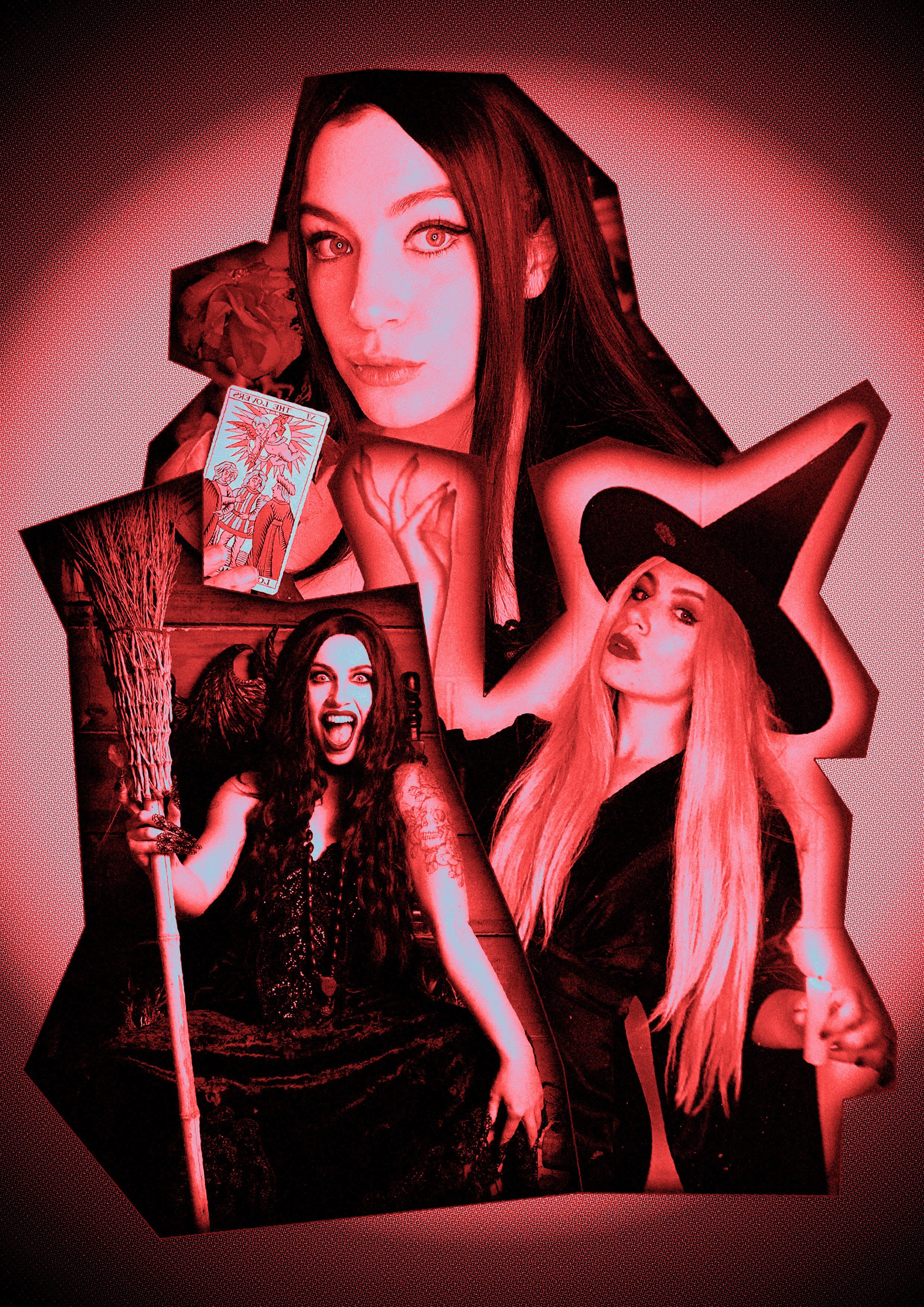
I sensed the palpable energy in the air. It was truly a special and captivating experience. It reminded me of a past theatre performance I’d been involved in, where we explored the concept of death, ultimately linking it to the idea that everything is composed of atoms and that energy can only be transferred, not created or destroyed. This led us to conclude that energy continues in some form after death. Watching Cheryl's candle burn, the thoughts came rushing back to me, and I couldn't help but believe that the energy they invested in writing on the paper and burning the candle would indeed undergo a transfer.
Vixen shared a similar perspective. She integrates both her Pākehā and Māori heritage into her witchcraft, explaining, "One of my favourite things about being Māori is our inherent understanding that everything possesses a soul, wairua." She harnessed this profound connection to the spiritual essence of all things in her craft, adding a deeply meaningful layer to her practice.
Vixen’s witchcraft stems from her mixed heritage. Cheryl is actively expanding their practice to focus on their Scottish and Celtic roots. Both made it clear to me the necessity to research and understand the history of the practices that they were taking part in.
Witchcraft has made a fraught journey into contemporary practice. An example is white sage, frequently used by contemporary witches and promoted on platforms such as TikTok. White Sage is used by indigenous Americans, and has been culturally appropriated by contemporary Pagans. Dreamcatchers, also of indigenous origin, have become a widely consumed product in and out of witchcraft, used by many people without understanding their history. The Romani people also experience this cultural appropriation. The term ‘gypsy’, is a racial slur used to persecute Romani people, but is now used by countless brands to market a bohemian look through fortune-telling and crystals.
Even the term ‘witch’ was brought over to North and South America by European colonisers, used to demonise the spiritual practices of indigenous peoples and survivors of the Trans Atlantic slave trade. Today, the majority of people I see identifying as witches are young, cis, white women on TikTok. There’s no denying that witchcraft’s use today stems from a harmful history, leading to contemporary practices that can be problematic. Modern witches navigate their craft by understanding the history situating witchcraft, and the personal roots that shape how individual practice takes place.
Vixen's practice originated from intuitive witchcraft, and she described how the transition to sex magic felt entirely natural. It was deeply intertwined with her journey from girlhood to womanhood and her exploration of sexual expression.
"If magic is about working with intention and energy to manifest a desired outcome, then sex magic is about
channelling sexual energy and intention to bring my desires into reality," she told me. Vixen harnessed her sexual energy, her taera, into her practice, finding it as inherent and effortless as identifying herself as a ‘sex witch’, takatāpui, or a woman.
Embracing sex magic provided a space for Vixen to connect with her sexuality and desires, embracing the inherent power that stems from it. It became an empowering practice, allowing her to assert her presence and claim space in a patriarchal world. Vixen expressed that in her eyes, "stepping into my sexual autonomy for my own pleasure and desire is a radical act". For her, witchcraft creates a supportive environment that welcomes those who challenge the status quo and patriarchy. She emphasised the strength she finds in the community of witches in Wellington, Aotearoa, and beyond, where she derives a sense of belonging and empowerment.
Cheryl was eager to dispel the misconception that the witches portrayed in TV shows and cartoons represent the reality of living or practising as a witch. They expressed concern that these depictions often perpetuate negative and hurtful stereotypes about the witchcraft community, which persist in today's society. "TV and films tend to depict witches as evil beings from the underworld, using their powers to bring harm to people," Cheryl explained. These portrayals, they emphasised, are unfounded stereotypes arising from misogyny and fear of the unknown. “In the communities I have witnessed, [witches] are nothing but kind and caring individuals with a profound connection to the natural world," they told me. Cheryl firmly believes that witches do not deserve to be burdened with the negative connotations attached to them.
As someone who had personally previously defined witchcraft by media portrayals, I felt pleasantly surprised by the authenticity of Cheryl’s practice when they invited me to witness it.
Ultimately, for Vixen, witchcraft has been a transformative and empowering experience. “Witchcraft has taught me that to be human is a nuanced and spiritual experience. It’s shown me that life is a constant cycle, like the change of seasons we too experience change. Or like a caterpillar's journey of becoming a butterfly; we are all on our own journeys in life. And witchcraft has taught me that I already possess all of the tools I need in order to live a fulfilling life. And one day, when I am an old crone, I will be able to bestow my knowledge and teaching on those around me. And thus the cycle continues!”
Thus, the cycle continues.
*name has been changed
27 Spirituality ✦ 05 ✦ FEATURES ✦ AHUATANGA


I Can Guess Your Sign by Your Dating Habits
Words
by
The Salient Quizzard (quiz/quizzle)
1. What’s your ideal first date?
A) Drinks at Dirty Little Secret and then spooky minigolf at The Witching Hour on Courtenay, or do an arcade, bowling, and karaoke combo at Archie’s in the new Willis Lane mall.
B) A chill coffee and at least an hour of chats at Swimsuit, and if all goes well, head to the Eyegum gig later that night.
C) Book or plant shopping before heading to Night Flower Punch House on Ghuznee for a candlelit cocktail— the perfect excuse to scope out your companion.
D) Keep it classic. Dinner and a movie. I recommend movie first because if the vibes are off, you can make up an excuse and leave when it’s over.
2. What’s your type?
A) Someone fun, adventurous, physically, or at least emotionally, unavailable. It’s giving ‘random hot person you meet at a festival’.
B) Someone who is a complicated contradiction, who provides the essential goss and drama in your life but also can chill the fuck out.
C) Someone who will shower you in love and understands the importance of emotional depth. As my flatmate would say, “Someone who will kiss your feet, literally.”
D) Someone who understands boundaries. Someone who enjoys sitting in silence and doing your own thing in each other’s company, occasionally sharing TikToks.
3. How do you let someone know you’re interested?
A) You invite them over with a ‘you up?’ text and make a move.
B) You send them a vague text with a heart emoji and see how they reply.
C) You buy them flowers or chocolate and plan a big bonanza to ask them out.
D) You tell them straight up. Or alternatively, you ignore it. They’ll take up too much time in your schedule if they say yes, and if they say no, it could interfere with future networking opportunities.
Mostly As Fire
You, my friend, probably have an Aries, Leo, or Sagittarius sun, moon, or rising. If you don’t, you might wanna double check your birth time cause you’re giving fire sign, or at least all of your romantic partners think you are. You’re fun, you’re the spark in your partner’s life (for as long as you want to stick around that is. I mean you’re a literal fire cracker - what did they expect?). Now, this quiz is silly, I’m sure you’re capable of staying in a relationship. But if you’re dating an Aries, Leo, or Sagittarius, you’re either super special and amazing or there’s something that makes you off limits that they like.
Mostly Bs —Air
Hiii, I’m guessing you have a Gemini, Libra, or Aquarius sun, moon, or rising. If not, talk to an astrologer about your house placements because you scream air energy. You’re so mellow, love that for you. You’re the (literal) calming breath of fresh air in your romantic partners’ lives. You introduce them to a new perspective on life. But also, babes, it’s a little too obvious when you zone out on them. If you want romance to work, you need to communicate and get out of your own world.
4. Choose a bad pick up line
A) Are you a parking ticket? ‘Cause you’ve got ‘fine’ written all over you.
B) I’ve heard it said that kissing is the language of love. Would you care to have a conversation with me about it sometime?
C) Your eyes are like the ocean; I could swim in them all day.
D) If I had a dollar for every time I thought of you, I’d be in a higher tax bracket.
5. What would your ex say are your red flags?
A) You’re forgetful, you’re commitment-phobic, you have an aggressive temper, you’re impulsive, and you get bored easily.
B) You’d flake on them for someone you just met, you can’t make a decision, you find it hard to be grounded.
C) You’re overly sensitive, you get jealous or insecure easily, you overshare and crave ‘deep’ conversation all the time.
D) You never want to go out or socialise, or when you do, you have specific requirements or want to leave early, and you get weirdly competitive and judgemental.
6. What does your next relationship look like?
A) Long Term, Long Distance, Low Commitment, Casual where you’re everything and they’re just Barbie. #it should be kenough for you
B) A chill (possibly open) relationship where it’s agreed that you disappear on a Europe trip every four months, with or without them.
C) A relationship where you’re each other’s best friend and have banging sex. You also move in together very quickly.
D) A relationship with someone who is basically your clone, or your exact opposite but only if they understand when it’s time to give you a week of space.
Mostly Cs —Water
It seems to me that you have a Cancer, Scorpio, or Pisces sun, moon, or rising, or at least you’re giving big water vibes. Stop looking at me like that, you know I’m right. I’m sorry, as much as you think I can’t read you, I can. You’re absolutely gorgeous in relationships. How amazing it is to be loved by a water sign. I bet each one of your partners has felt adored by you. You devote yourself to your loves, until they fuck up and they feel your wrath or they hurt you. When you pick yourself up from wallowing though, it’s demon-mode.
Mostly Ds Earth
You’ve got a Taurus, Virgo, or Capricorn sun, moon, or rising. I doubt I’m wrong here because I’m a Capricorn and I know what it’s like to have a love/hate relationship with your introvert-hermit persona. You’re super loyal and committed to your partners. You just make it very hard for them to see that love a lot of the time, when you’d rather stay at home or you get a temporary ick when they chew weird. It’s time to get out of your comfort zone and do something crazy—you might enjoy it. If not, it’ll re-affirm that you were right, but at least you showed them you tried.
✦ QUIZ ✦
Dear Aunty Vic
I cheated on my situationship, became friends with benefits with a new guy, and then he hooked up with someone else. I feel like I was the player, but now I'm the one who got played. Advice please?

.AQFirst off, it sounds like you got yourself onto the relationship train without ever intending to buy a ticket. You probably felt trapped and found yourself thinking, “Fuck, I don’t want this person to be my partner.”
To be honest, I think that is a bullshit excuse for cheating. Sorry, not sorry. The reality is you can get off this relationship train any time you want. All it takes is a chat to your partner, asking, “Hey, where are we heading? I don’t know if we’ve got tickets to the same destination.” Your partner might respond, “Well, I’m going to married-with-two-kids-extraexclusive-ville”, and you’d respond, “Sorry, I want to go to sex-every-Saturday-and-non-exclusive-town.” And at that point, you get off the fucking train.
It appears that you decided to take an emergency exit instead of communicating your destination to your partner. Your partner viewed your relationship as exclusive, but you didn't want it to be that way. As a result, you made a quick move and got involved with someone else during a night out, which sent a clear signal that you weren't interested in pursuing an exclusive relationship. This allowed you to avoid having the difficult conversation about wanting to arrive at different destinations.
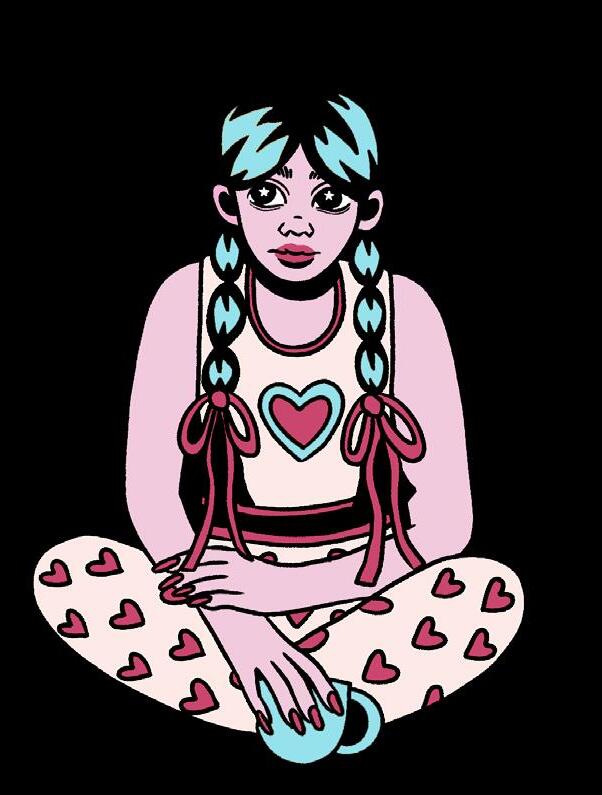
While you technically labelled the relationship a ‘situationship’, hinting at questionable exclusivity, the fact that you acknowledged your actions as ‘cheating’ implies that exclusivity was expected. In other words, you knew what you were doing.
Maybe it’s only now, after your friends with benefits situation, that you can see how fucked up things can get. Failing to communicate about exclusivity and expectations in any relationship (casual or serious) is only going to end in messy, hurt feelings. It seems that you lacked the courage to communicate your feelings to your situationship when you didn't want to be exclusive. Now, you're also struggling to find the courage to assert to your friend with benefits that you do want an exclusive relationship.
If I have interpreted this entirely wrong, and that you had told your situationship that you were not exclusive: you didn’t cheat! Don’t tell yourself that! If you and your friend with benefits did have a conversation that you were exclusive, and then they hooked up with someone else, SCRAM!
In order to be successful, any type of relationship (exclusive or not) requires both parties to be clear in what they want and be able to articulate that desire. If you have a track record of finding this difficult to do, or seem to attract people that find this difficult to do, it’s time to park the fuck up. Be single, discover yourself and your desires. Don’t be that person who is repetitively hurting people, or getting hurt, simply because you aren’t emotionally mature enough to communicate or understand what you want. It’s okay to be single. In fact, it sounds like being single is the most healthy thing you can do right now.
30 ✦ Spirituality
06 ✦ COLUMNS ✦ TIWAE
Send your anonymous questions to Aunty Vic via the Salient Linktree.
.
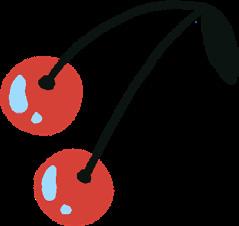

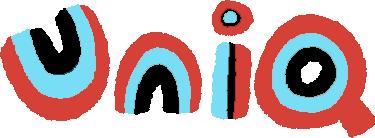
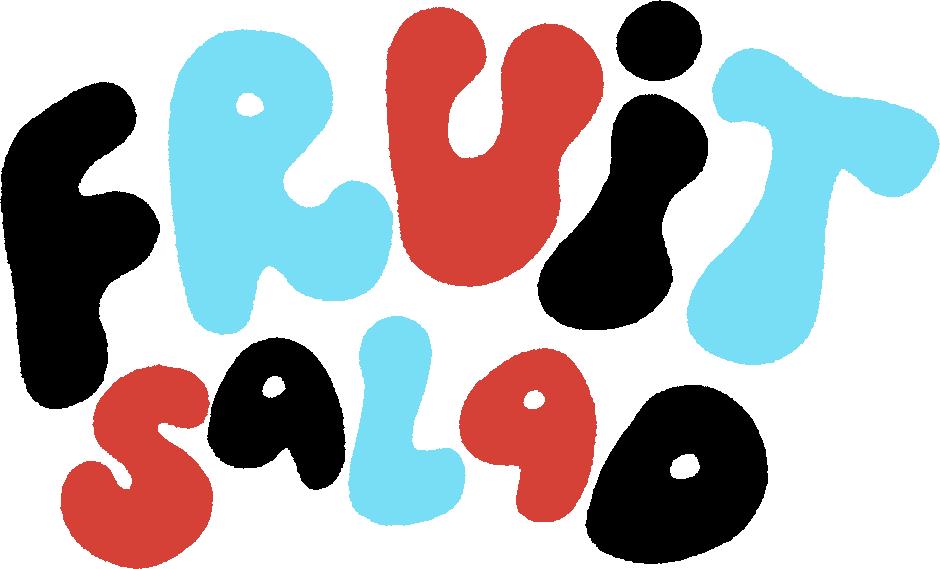
IEmbracing the Queer Spirit: A Mindful Journey
Words
by Khai Dye-Brinkman (they/them)
want to talk about something close to my heart. It’s something that has brought me both peace and understanding: spirituality.
Before you roll your eyes and think it's all rainbows and unicorns, it's so much more than that! As a queer individual who's delved deep into the spiritual realms, I've discovered mindfulness is my secret sauce that supports me to connect with the cosmic dance of life. So, grab your favourite beverage, and let's dive into this mindful journey together.
Picture this: deadlines are piling up, rent is due, and your boss has asked you to pick up a shift. The world is buzzing and your mind is running a million miles an hour. Sound familiar? That’s my life too, but I promise that mindfulness helps.
Mindfulness is not just about sitting cross-legged and chanting ‘om’ like a meditation guru (although, if that's your jam, go hard). Mindfulness is, truly, about bringing your full attention to the present moment and letting go of judgement.
Here's where spirituality comes into play. For me, spirituality isn't tied to any specific religion or belief system. Instead, it's about finding a sense of connection to something bigger than yourself. And in this chaotic world, finding that connection can be like finding a needle in a haystack.
Mindfulness and spirituality make the ultimate dream team because they both teach us to embrace authenticity. As a queer person, I know what it's like to grapple with self-acceptance and societal expectations. But through mindfulness, I've learned to let go of judging myself and lean into the beauty of my true self, being unapologetically me.
One of my favourite mindfulness practices is the art of observation. Imagine watching clouds drift across the sky. You don't try to control their shapes or movements; you simply observe, allowing them to just be. Similarly, mindfulness helps us observe our thoughts and emotions without getting swept away by them. In this space of observation, we can explore our spirituality without judgement or preconceived notions.
Mindfulness also acts as a gentle reminder that our spirituality doesn't have to be serious all the time.


It's okay to laugh at ourselves, dance wildly to our favourite tunes, and even indulge in guilty pleasures. Spirituality and mindfulness are about finding objective joy in the present moment, and if that means belting out a bedroom ballad, so be it!
But let's not forget the tough stuff.
Life isn't always softly drifting clouds and sunshine, there are thunderstorms too. When we face hardships, mindfulness can become a lighthouse guiding us through rough waters. By anchoring ourselves in the present moment, we can navigate life's challenges with resilience and grace. Embracing spirituality in these moments brings solace and the understanding that we are part of a vast, interconnected universe.
Here's a little secret: you don't have to be perfect. Mindfulness and spirituality are journeys, not destinations. There will be days when your mind feels like a caffeinated monkey, and that's totally okay. The key is to approach this practice with gentleness and compassion, just as you would with a dear friend.
So, my fabulous friends, if you're curious about exploring spirituality, consider inviting mindfulness to your self-discovery tea party. Whether you're queer, straight, or somewhere in between, these practices can offer profound insights and create a deeper connection with yourself and the world around you.
As we wrap up this chat, I encourage you to find a quiet moment, take a deep breath or two, and savour the stillness. Remember, spirituality is about embracing your uniqueness and connecting with the universal energy that binds us all together. And who knows, amidst the chaos and the calm, you might find a whole new world of wonder waiting for you.
Until next time, stay mindful and embrace your queer spirit with pride!
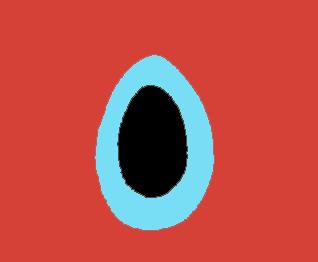

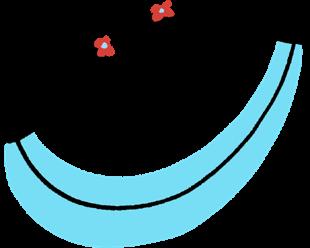
31 Spirituality ✦
06 ✦ COLUMNS ✦ TIWAE



Blending Your Spirituality
Words by Whakairitaua Rukuwai (she/her; Taranaki, Te Ātiawa)
You know when you start to make a smoothie and everything is loud, the blender is shaking, and you think it's about to explode? That was me at age 5 realising that my beliefs contradict each other.
Growing up in a Māori Catholic family, I struggled to exist within two worlds. My spirituality has never been here nor there, but a constant blend between both Catholicism and te Ao Māori.
Before primary school, I attended Te Kōpae Piripono in Taranaki. At Te Pōpae, I was enriched in te Ao Māori. I always felt loved and protected by God and ngā Atua. But because my family have always been very devout Catholics, instead of attending kura kaupapa, I was sent to a Catholic primary school.
It was a huge culture shock. When they started teaching about the commandments, I was baffled by the first one: “You shall have no other gods before me”. After that lesson, I stared into space, thinking, “Are Atua gods? Have I been a bad Catholic? Does God not love me? Can I not say karakia anymore?” In my naive mind, ngā Atua and God had all existed in harmony ensuring all was well in the world, helping each other out. I was quickly proved wrong.
At 6 years old, I watched some girls from class stab pointed sticks into the ground for fun. In true Kaitiaki nature, I rushed to defend Papatūānuku. I sobbed, “Please stop, you’re hurting my Māmā!” They ran away

laughing and went to our teacher, supposebly ‘crying’. Instead of my teacher explaining cultural differences, she yelled at me. I was scolded for spreading lies. She said that Papatūānuku is just a character from a book—she pointed to the cover of In the Beginning, stating it was just a made up story. I was left wondering which creation story was true.
Experiences like this continued throughout the years. At this point, you would be forgiven for thinking I would relinquish my Catholic faith out of resentment, but spirituality is embedded in me. My spirituality gives me hope and peace of mind. Don’t get me wrong, I have found great conflict with the Catholic church and the weaponisation of religion—from its role in colonisation to the church’s opinion on some topics. I love my understanding of God, and I’ll stand by Him, but my values clash with those of the men that speak on his ‘behalf’.
After years of being told my beliefs are wrong, embarrassed to be a Māori who is also Catholic, I have come to the decision to bugger everyone who tells me my beliefs are wrong. I’ve realised, who knows? Who are they to tell me what’s true and what’s false? At the end of the day, respecting other people’s beliefs is all we need to do. We don’t all need to believe the exact same thing.
If you're like me, struggling to blend your spirituality smoothie, I can only suggest to keep the blender going. Eventually, it will all smooth out.

32 ✦ Spirituality 06 ✦ COLUMNS ✦ TIWAE
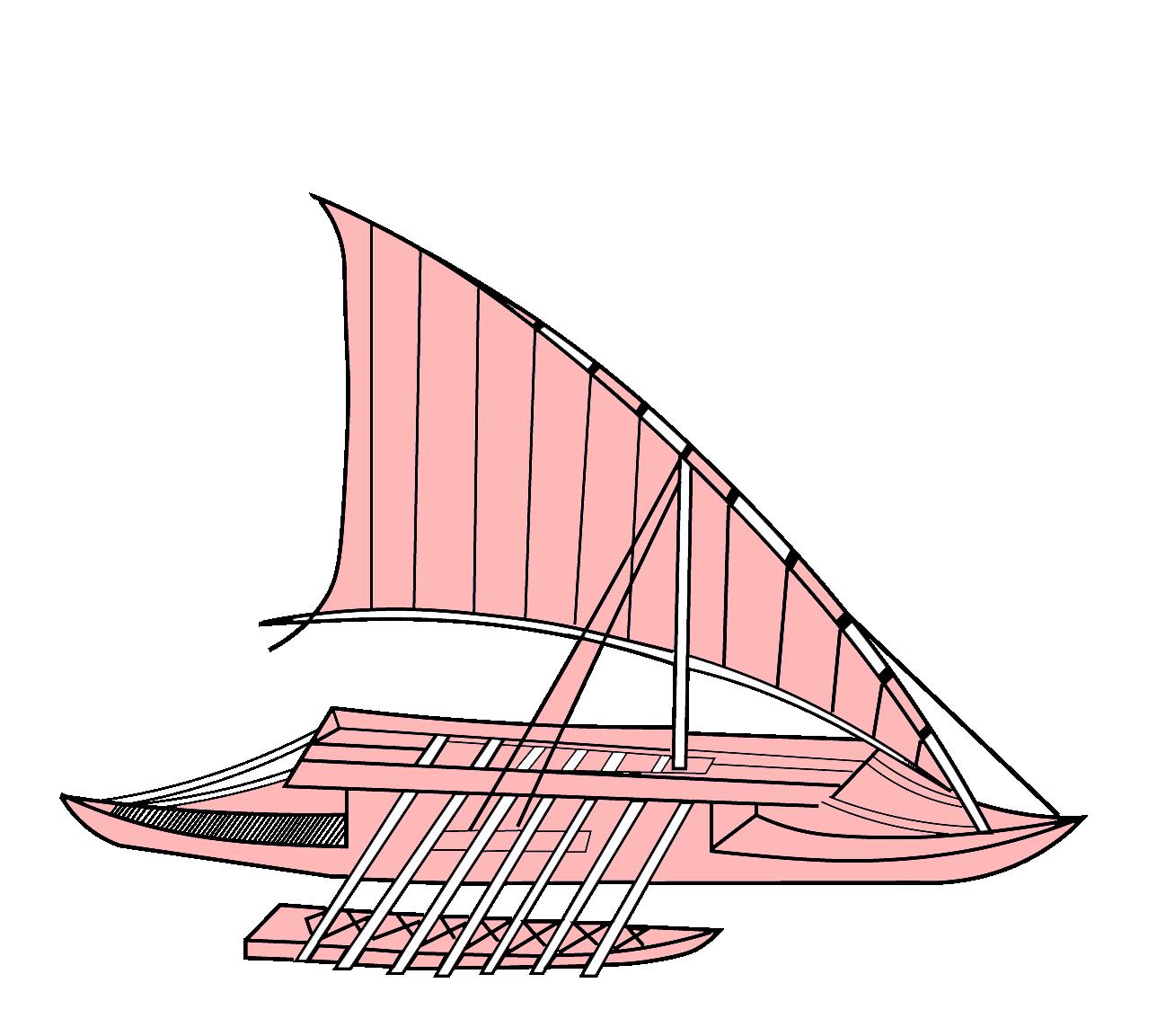
Mana and Christianity Pasifika Students' Council
Words by Porita Fruean (she/her)
Spirituality plays a significant role in the Pasifika community. It encompasses the people and cultures of the Pacific Islands. Pasifika spirituality is deeply rooted in our traditional beliefs, practices, and cultural values, often blending indigenous customs with more recently introduced religious influences, such as Christianity.
Mana
Mana is a fundamental concept in Pasifika cultures, referring to spiritual power, authority, and prestige. It holds great significance in our belief systems and social structures.
The concept of Mana exists throughout the Pacific Islands and while its exact interpretation and usage may vary from culture to culture, common themes persist: mana in nature, warfare, spiritual power, leadership and authority, and expressions in language and rituals.
Spiritual Power
Mana represents a supernatural or divine power that is believed to reside within individuals, objects, or natural elements. It is a force that can influence events, actions, and outcomes in both positive and negative ways. In our community, there are important stories, myths, and legends that have been passed down from generation to generation— the stories of gods, demigods, and the spirit realm. The transmission of spiritual knowledge and wisdom is mainly done through oral traditions, storytelling, songs, and dances. These stories gave birth to thousands of traditions that are still being carried out to date around the different Pacific Islands, as each island has its own stories of Mana. There are many stories told throughout the islands that illustrate the spiritual power that thrives in our oceans. I will tell one that holds a special place in the hearts of my people.
The Story of Tagaloa And The Creation Of The World (Samoa)
In Samoan mythology, the god Tagaloa is a key feature in the creation of the world. Tagaloa possesses immense spiritual power and is responsible for creating the heavens, the earth, and all living creatures. His actions and decisions shape the entire cosmos. Tagaloa created a world for the people to live and thrive on, and he gave them the wisdom to navigate their way across the world. As time passed, Tagaloa noticed that the people began to turn away from him and have their own way. He then descended back to the heavens, leaving the people to navigate their way across the world he created.
Christianity
With the arrival of European missionaries in the 18th and 19th centuries came Christianity. From then to now, its influence has grown, and it’s had a magnificent role.
In the past, before our islands were discovered by our colonisers, we had our own way of living and our own moral standards. Our ancestors had their own indigenous belief systems. Each island had its own distinct belief system: often polytheistic, animistic, or ancestor-based. The introduction of Christianity brought a Moral and Ethical Framework, emphasising principles such as compassion, forgiveness, and humility. These values have influenced personal behaviour and societal norms.
Christianity quickly became the centre of life in the Pasifika communities, mending and transforming our way of life, and has had a big influence on the cultures around the islands. Often, I hear elders back home say their goodbyes to family members, ending with “tatou feiloa’i pea i talosaga”, which translates to, ”we shall meet again in prayer”. Our faith, belief and being founded on God has become our way of gaining blessings. Christianity has transformed our way of life in the Pasifika, and it has birthed a sense of oneness and cohesion in our communities.
33 Spirituality ✦
06 ✦ COLUMNS ✦ TIWAE

Glow Worm Caves and Noctilucent Clouds
Words by Niamh Vaughan (she/her)
Not many know there’s crystals in the clouds That grace the sky at midsummer’s last light; To show themselves at day they are too proud Belonging to the mysteries of night. Can you believe the stars inside the earth Form constellations from the inside out? Perhaps they shine for when we leave the hearse To guide the ending all the world’s in doubt. Just like the opening flowers of the dawn Or wilting blossoms fallen to the ground, All souls that bloom are fated to be mourned, Becoming dust that forms the still unfound. In glistening clouds and insects I find peace, Despite that life’s given so short a lease.
07 ✦ CREATIVE SPACE ✦ AUHUA

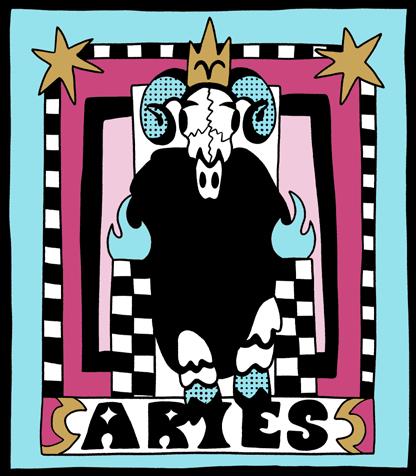
It’s time for rebellion! You have to work, rain or shine, and it’s killing your health. I’d tell you to stop, but I know you can’t afford to. You need to change the system! Get your activist boots on and start marching for your rights!
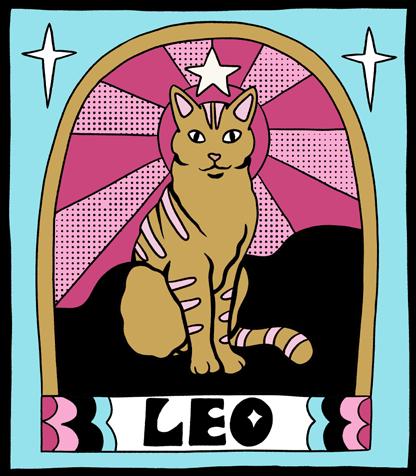
Not your breakdown being extremely public... You might break up with your partner at a party in front of a room of people, then sob uncontrollably about it at your aunt’s birthday lunch. Good job, Leo, you ruined your aunt’s day.
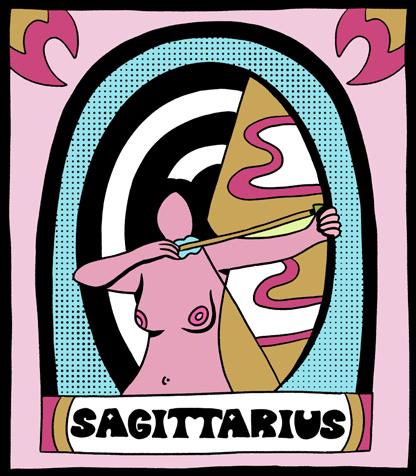
You’re experiencing sticky fingers whenever you enter Countdown. As Aladdin said, “Gotta eat to live, gotta steal to eat. I steal only what I can’t afford (that’s everything!).” So fuck it. You’re doing God’s work. Down with Big Business.

I’m getting two messages for you. I’m seeing fights and tension at your hall/ flat, but also, you’re lowkey gonna be having, like, the best sex of your life. A strange combination, but you are always at your partner’s house, avoiding your flatmates.
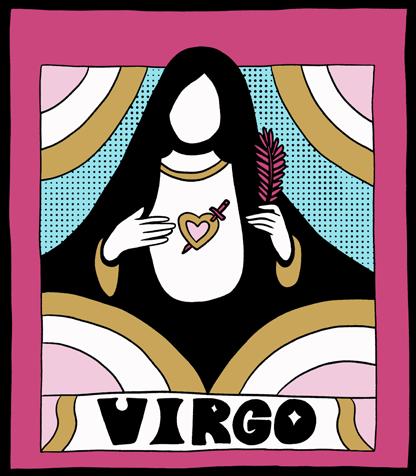
I’m really proud of you, Virgo. I’m seeing some character development this week. You’re asking questions in lectures (oh my!) and setting boundaries in your relationships (by golly!). Your confidence has come a long way.
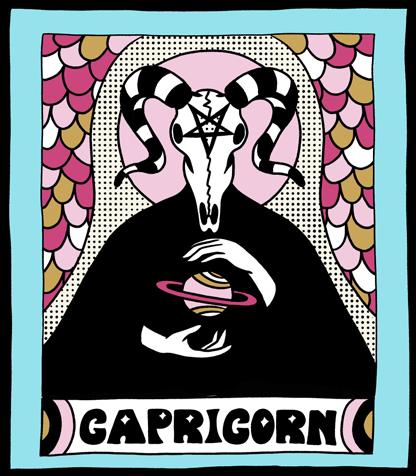
God, Capricorn. Why do you always have to be the hardest sign to write for? I always have to write the same stuff. Okay, no. I’ll stop. I always give you tough horoscopes, so… Capricorn, I praise your consistency! Love you always <3

Your charger ain't charging. Your messages ain't sending. Your wifi ain't connected. No, it couldn't be? Mercury retrograde can't be on its way again, can it? Believe you me, I’m just as tired of writing ‘bout it as you are of reading it.
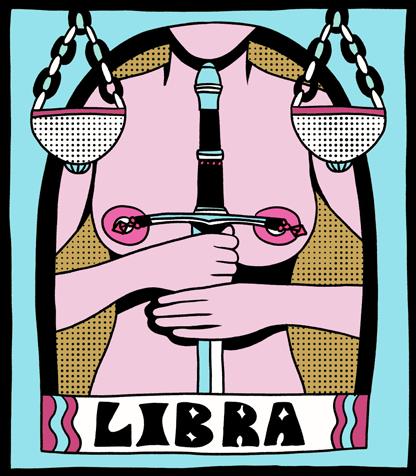
You’ll witness a friend get their ego bruised this week (they’re probably a Leo lol). Part of you feels bad about it, but you will secretly enjoy this. They’ve been getting too big for their boots recently. Low-key toxic of you, Libra.

I write this with immense disappointment. I told you last week not to hook up with that ex, but you did, and now you’ve come crawling back to me for advice. Well, I’ve nothing to say to you. Consequences will come. You reap what you sow.
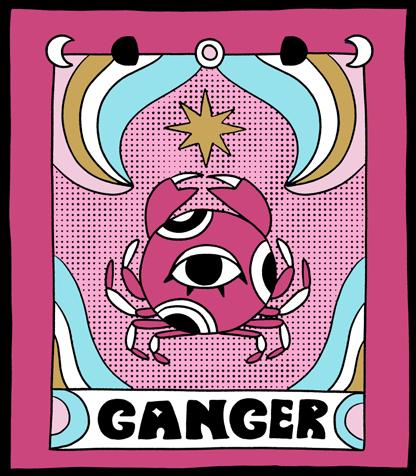
You humoured a finance bro, didn’t you? No, I’m not judging, I just don’t think I quite understand why you would bother talking to a man about investments when his parents pay his rent. I bet he doesn’t have a licence (and follows Andrew Tate).
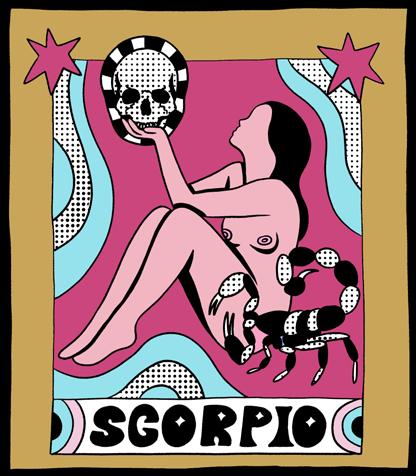
One of your friends is reaaaallllyy invested in your relationship. Like, too invested. Sorry, I know you had a similar horoscope a couple weeks ago, but what can I say? Your girl’s hot. That ain’t your bro, that’s a snake in the grass.
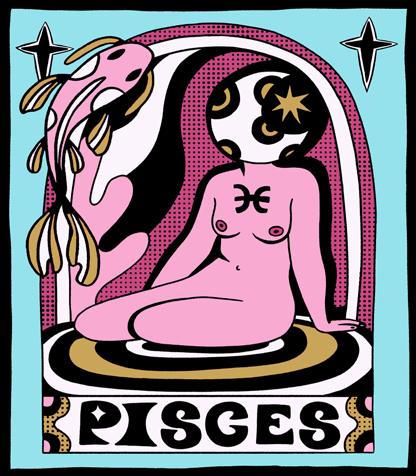
There’s a major aspect of your identity you need to discover. Everything in your life seems perfect (well, that’s kind of a redundant statement for a student), but something is eating away at you. What is it about yourself you can’t recognise?

35 Cupid ✦ Health & Disability


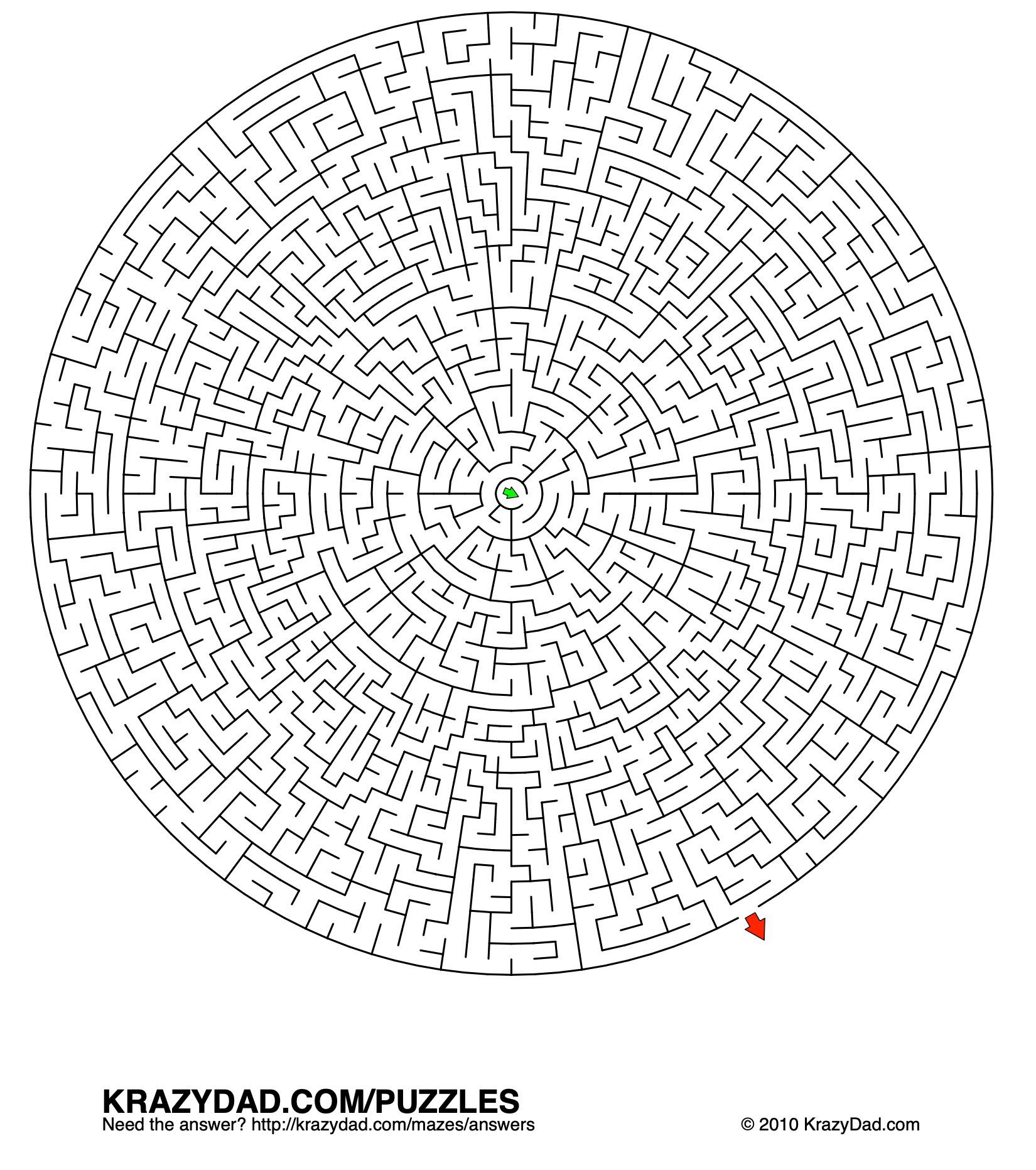
09 ✦ PUZZLES ✦ PANGA 10/08/2023, 11:57 Web Sudoku - Billions of Free Sudoku Puzzles to Play Online https://www.websudoku.com/?level=2 Medium Puzzle 6,733,020,544 Back to puzzle Print another 6 8 7 9 2 7 9 3 4 4 1 2 1 9 1 2 9 7 8 9 6 8 3 9 6 4 1 1 4 5 8 9 whakapono
OF THE WEEK: FAITH
brain boozled
WORD
NZ Sign Language
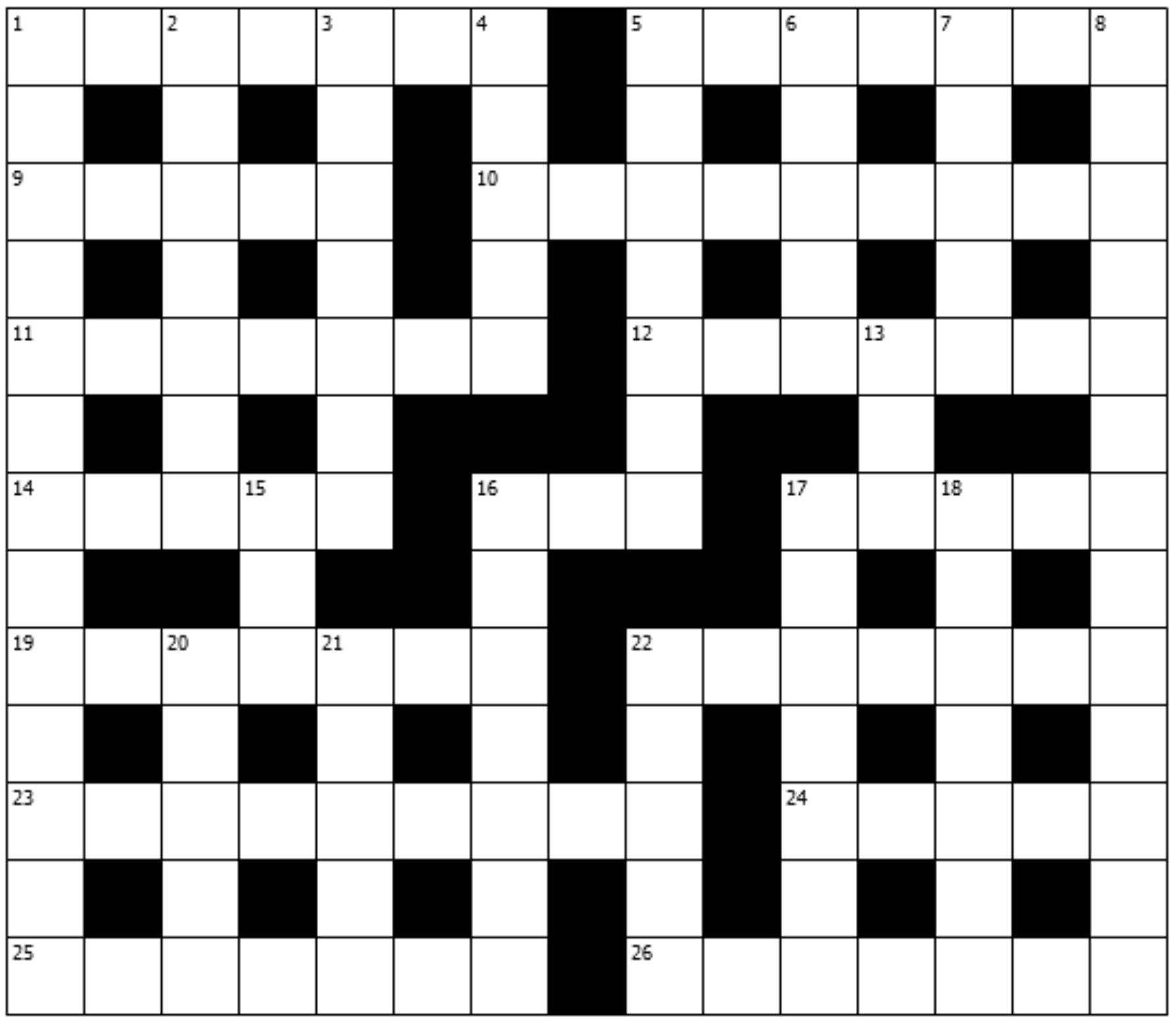
ACROSS
1. Vague, non-specific (7)
5. Very old-fashioned, obsolete (7)
9. Male bee (5)
10. Successor (4,2,3)
11. Hairstyle with a long strand of hair at the nape of one’s neck (3,4)
12. Glasses or goggles (7)
14. Given name of author Dahl (5)
16. Type of sauce, milk, and bean (3)
17. Slow shelled mollusc (5)
19. Education institutions (7)
22. The line that divides the earth’s hemispheres (7)
23. Happy-go-lucky doll from the children’s show ‘In the Night Garden’ (4,5)
24. Animated penguin known for saying ‘Noot noot’ (5)
25. Peppermint, vanilla, or almond, for example (7)
26. Dull, tiresome, slow (7)

DOWN
1. 1981 song by Queen and David Bowie that was sampled in ‘Ice Ice Baby’ (5,8)
2. Country with the capital Zagreb (7)
3. Birthstone for May (7)
4. To do with the kidneys (5)
5. State of worrying, nervousness (7)
6. Exact copy (5)
7. Joint connecting the foot to the leg (5)
8. The standards to which comparisons are made in an experiment (7,6)
13. Come first (3)
15. Toilet, dunny (3)
16. Chapel painted by Michelangelo (7)
17. Drank or ate soup impolitely (7)
18. Given name of Spanish actor Banderas and Italian composer Vivaldi (7)
20. Ones who have a party at their place (5)
21. ‘In the ___ days…’ (5)
22. Country known for its pyramids (5)
777 Find our crossword answers on our website or the Salient Linktree. 09 ✦ PUZZLES ✦ PANGA
3 easy steps for a chance to win $3k.



Register
Meet with a MAS Adviser
Graduates of 2023, we want to celebrate you with a $3k giveaway. Register now, meet with check, then you’re in the draw!
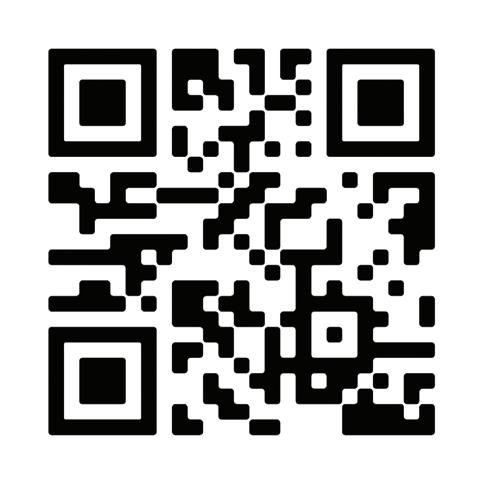
Register at mas.co.nz/grad2023
MAS is proud to be supporting NZMSA, including publication of this guide
You’re in the draw Terms and
38 ✦ Spirituality 10 ✦ CREATIVE SPACE ✦ AUHUA
conditions apply
THE TEAM

CO-EDITOR
Maia Ingoe (she/her)

NEWS EDITOR
Zoë Mills (they/she)

SUB-EDITOR
Tessa Keenan (she/her)

STAFF WRITER
Kiran Patel (he/they)

CO-EDITOR
Francesca Pietkiewicz (she/they)

NEWS EDITOR
Ethan Manera (he/him)

POETRY EDITOR
Maia Armistead (she/her)

STAFF WRITER
Phoebe Robertson (she/her)

CHIEF REPORTER
Niamh Vaughan (she/her)

Fan (she/her) EDITORIAL SUPPORT

Pippi Jean (she/her) STAFF WRITER
Porita Fruean (she/her) Blake (cross/word) CONTRIBUTORS
Ella Hoogerbrug (she/her)
Khai Dye-Brinkman (they/them)

DESIGNER
Bella Maresca (they/them) @cupids.kiss


PODCAST INTERN
Alex Marinkovich-Josey (he/him)
PODCAST MANAGER Simoné Botha (she/they)

VIDEO CONTENT CREATOR
Willem Koller (he/they)

NEWS INTERN
Ethan Rogacion (he/him)

SOCIAL MEDIA MANAGER
Seren Ashmore (he/him)

WRITING INTERN
Jia Sharma (she/her)
Mia Rafferty (she/they) @miaraffertyphotography
39 Spirituality ✦
✦ NGĀ MIHI ✦
Joanna
CENTREFOLD ARTIST








































































































